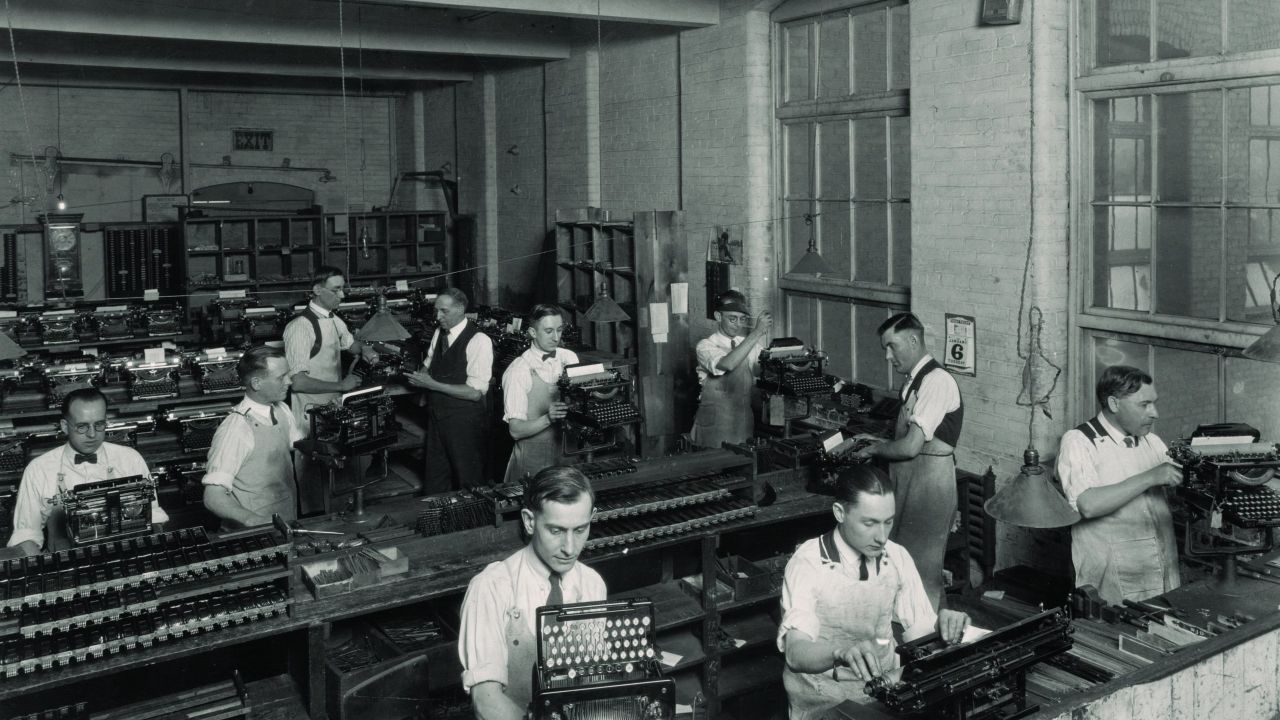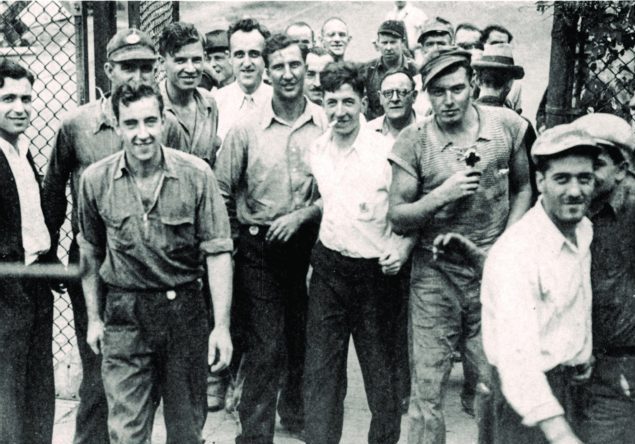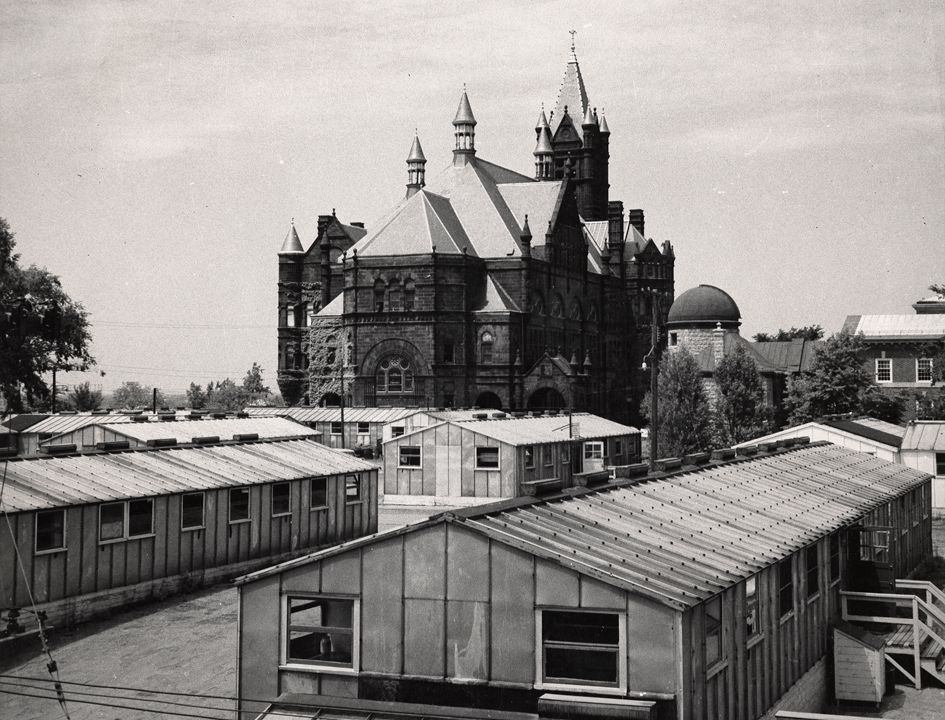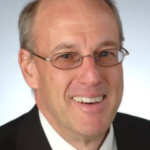We’ve calculated the number of COVID-19 infections that will be spread from a single COVID-19 “superspreader” to students and teachers in a classroom shared for 4 hours. Without masking and with a low ventilation rate, nearly all susceptible students and teachers will be infected. Neither masking nor ventilation alone is sufficient to reduce the infection rate below 10%. Careful use of surgical masks along with good ventilation reduced the estimated infection rate to 2%.
News
Understanding Organic Pollutants in Waterways
Teng Zeng, Ph.D., is an Assistant professor of civil and environmental engineering in the College of Engineering and Computer Science at Syracuse University. In a project with Sharon Moran, associate professor of environmental studies at SUNY-ESF, Zeng is collaborating with the Upstate Freshwater Institute and New York State Federation of Lake Associations, making use of a citizen science approach to look at patterns of organic pollutants in more than 100 New York lakes. Zeng analyzes water samples collected by volunteers—typically lakefront residents—and communicates findings back to them.
SyracuseCoE Invites Innovation Fund Proposals that Address the COVID-19 Pandemic
Proposals for up to $10,000 are invited from current SyracuseCoE Partner companies for round 2 of the 2020 Innovation Fund. The Innovation Fund is funded by SyracuseCoE’s Partner Program to help Partners overcome barriers in the process of commercializing potentially transformative innovations.
The COVID-19 public health emergency has had an unprecedented impact on our nation’s economic health and well-being. Companies throughout New York State are contributing to solutions addressing these challenges, from developing new applications for existing products to complete transformation of manufacturing operations to produce items most needed by frontline workers. To support these efforts, proposals are restricted for this round to innovations that specifically target the COVID-19 public health crisis and are consonant with the Center’s focal areas: indoor environmental quality, renewable energy and energy efficiency, and water resources.
Podcast: Experts Agree on Aerosol Transmission of COVID-19: How Can Schools Manage Indoor Air to Stop the Spread?
View our other Research & Technology Forums and Podcasts
Panelist Dr. Jensen Zhang is an associate editor of the professional ASHRAE journal, Science and Technology for the Built Environment. Read his recently published editorial, Integrating IAQ control strategies to reduce the risk of asymptomatic SARS CoV-2 infections in classrooms and open plan offices.
A new school year is beginning soon. Understanding the ventilation and air quality of indoor spaces is critically important. From improved ventilation modifications, to HVAC and air filtration, to physical modification of spaces, this podcast discusses the current knowledge of how to mitigate the spread of the coronavirus in indoor environments.
With strong recommendations from 239 scientists from 32 countries, including faculty from Syracuse University, the World Health Organization is now acknowledging the evidence that COVID-19 can be transmitted through aerosol droplets. Viral particles become airborne when people sneeze, cough, sing, talk or breath.
As students return to campuses and classrooms, how can faculty, teachers and building managers optimize ventilation and filtration strategies to help keep students and faculty healthy?
Panelists:
Cliff I. Davidson, Thomas C. and Colleen L. Wilmot Professor of Engineering, Environmental Engineering Program Director of Civil & Environmental Engineering, Syracuse University
Cliff Davidson is the Thomas and Colleen Wilmot Professor of Engineering in the Department of Civil and Environmental Engineering at Syracuse University in Syracuse, NY. He also serves as Director of Environmental Engineering Programs, and Director of the Center for Sustainable Engineering. He received his B.S. in Electrical Engineering from Carnegie Mellon University, and his M.S. and Ph.D. degrees in Environmental Engineering Science from California Institute of Technology. Following his PhD, he joined the Carnegie Mellon faculty where he stayed for 33 years in the Department of Civil Engineering (currently Civil and Environmental Engineering) and the Department of Engineering and Public Policy. He moved to Syracuse University in 2010.
Davidson’s research background is in the area of air quality, especially aerosol interaction with surfaces, including surfaces of fibers in a face mask or filter. He has also worked on environmental sustainability in other areas, such as the design of sustainable cities, the effectiveness of green roofs in reducing urban stormwater runoff, educational innovations for teaching sustainable engineering, and identifying the preferences of individuals and organizations for strategies to adapt to climate change. He has published over 130 papers in refereed journals and another 100 papers in peer-reviewed conference proceedings and book chapters. He has served on the editorial boards of four scientific journals, and is a Fellow in three national organizations, including the American Association for Aerosol Research, where he also served as President. He has recently been chosen as the 2021-2022 Distinguished Lecturer by the Association of Environmental Engineering and Science Professors.
Jianshun “Jensen” Zhang, Ph.D., Professor, Department of Mechanical and Aerospace Engineering at Syracuse University and Visiting Professor, School of Architecture and Urban Planning at Nanjing University, China
Jianshun “Jensen” Zhang is Professor and Director of Building Energy and Environmental Systems Laboratory, Department of Mechanical and Aerospace Engineering at Syracuse University (SU), New York, USA, and a Visiting Professor and Chief Researcher of the School of Architecture and Urban Planning at Nanjing University, China. He received his Ph.D. from University of Illinois at Urbana-Champaign and worked at National Research Council of Canada for 8 years before he joined SU.
Dr. Zhang is a co-leader of the SU-wide research cluster in Energy and Environment that promotes and coordinates multi-disciplinary research on the campus. He is an expert in room air and contaminant distribution, material emissions, air purification, building enclosure performance, and combined heat, air, moisture and pollutant simulations (CHAMPS) for integrative design and intelligent controls of buildings. He has authored/co-authored over 200 technical papers and 3 American national standards. He is Associate Editor of Journal of Science and Technology for the Built Environment (STBE, formerly ASHRAE HVAC&R Research Journal) and The International Journal of Ventilation, and serves as a Member of the Editorial Boards of Building Simulations—an international Journal, International Journal of High-Rise Buildings, and the International Journal of Architectural Frontier Research. He is Fellow of ISIAQ and ASHRAE, and current Chairman of the International Association of Building Physics.
Mike Wetzel, PE, President & CEO, Air Innovations
Michael Wetzel is President and CEO of Air Innovations, a SyracuseCoE Partner firm that specializes in the design and manufacture of environmental control systems. Wetzel is a graduate of Clarkson University where he received a bachelor of science in mechanical engineering. He is a licensed Professional Engineer and is the holder of seven US patents.
Prior to Air Innovations, Wetzel was based in Strasbourg, France for four years working for a multinational company building cleanrooms in Europe and the Mideast. Previously he worked stateside as an engineering manager in the HVAC construction industry.
Occupancy Sensors to Regulate Energy Use
Senem Velipasalar, Ph.D., Associate professor of electrical engineering and computer science, College of Engineering and Computer Science, Syracuse University.
“This kind of technology could have many other energy-saving applications.”
Project: Developing a low-cost, high-accuracy sensor platform that detects human presence inside buildings to reduce energy use in residential settings by as much as 30 percent.
Backstory: About 13 percent of all energy produced in the United States is used to heat, cool and ventilate buildings. Much of this energy is wasted by heating, cooling and over-ventilating unoccupied or partially occupied spaces. Existing building automation systems rely mostly on motion detectors and are limited in their reliability and ultimate ability to substantially reduce HVAC energy use.
Nuts and Bolts: Through a $1.2 million ARPA-E grant, Velipasalar is leading a team that partners faculty from SU’s Department of Electrical Engineering and Computer Science with SRI International, a leading nonprofit research center with expertise in embedded vision and machine learning. Their goal is developing a sensor platform using an infrared sensor, a visible-range camera, microphone and low-power processor to detect human presence— including in low light conditions and when people are static—and to develop algorithms to analyze and combine data from these sensors to enable occupancy sensing that would be impossible by each sensor alone. “We are making use of off-the-shelf components to develop a battery-operated, stand-alone platform that can perform occupancy detection in an efficient and reliable way on site,” she says.
SyracuseCoE Impact: Velipasalar, who has a strong record
of securing NSF support, credits former SyracuseCoE executive director Ed Bogucz with informing and motivating the team about this funding opportunity, as well as guiding them through the ARPA-E proposal preparation. “The ARPA-E proposal and budget preparation is different from NSF,” she says. “SyracuseCoE was very helpful every step of the way, especially in helping us develop and manage the budget.”
Practical Application: While the ARPA-E project is designed specifically to reduce HVAC energy consumption, Velipasalar says, “This kind of technology could have many other energy-saving applications,” including lighting and sound systems.
Intellectual Collision: Velipasalar’s research is at the intersection of embedded smart cameras, computer vision and machine learning. Her focus on questions related to energy is a more recent development, an outgrowth of her connection with SyracuseCoE. In addition to the ARPA-E project, an ongoing project with Tarek Rakha, former SU assistant professor of architecture and SyracuseCoE Faculty Fellow, investigates heat loss in buildings using thermal cameras on drones. Velipasalar and her Ph.D. student have developed an algorithm that autonomously detects heat leakages from thermal images of building structures.
Led by Syracuse University, SyracuseCoE engages students, faculty, and collaborators at 200+ firms and institutions to catalyze innovations that improve energy efficiency, environmental quality, and resilience in healthy buildings and cleaner, greener communities.
Start-up tkFabricate joins the Clean Tech Center
The Clean Tech Center at The Tech Garden is a NYSERDA-funded initiative focused on developing clean energy technology companies in Central New York. Clean tech is an emerging sector of products, services and processes that harness renewable energy sources, reduce the carbon footprint and advance sustainability. The Center offers support for entrepreneurs and early-stage companies through incubation, acceleration and retention. Company’s needs are evaluated and customized assistance is provided with funding, technical support, and commercialization.
One new venture, tkFabricate (tkF), that has joined both the Clean Tech Center and SyracuseCoE Partner Program is aiming to help New York State achieve its goal of a carbon-neutral economy. tkF is partnering with a Dutch initiative, EnergieSprong to develop and implement feasible, affordable and market-driven deep energy retrofits for multifamily residencies. By taking precedent from existing advanced manufacturing processes used in Europe, tkF’s innovative approach promises to minimize tenant disruption by implementing 3D scanning and modeling tools that facilitate design and installation. The construction industry will have increased productivity, resulting in a reduction of installation costs of mechanical systems and building facades via vertical supply chain integration design for manufacturing and assembly.
Acumen Detection: From Cows to COVID-19
Acumen Detection, Inc., is an agtech start-up member of SyracuseCoE that is commercializing its innovative technology for detecting the pathogens causing disease in dairy cows. Operating its R&D and manufacturing out of SyracuseCoE, Acumen’s main technology is based on a DNA early-detection system developed over the years as an SRC, Inc., subsidiary. Originally envisioned during Operation Desert Storm to save the lives of troops that were subjected to chemical or biological attacks, Acumen adapted this technology to revolutionize the dairy industry by helping farmers protect the health of their herds from the spread of mastitis through early detection.
Now, in response to the COVID-19 pandemic, Acumen is adapting its testing technology again to address the critical need for diagnostic reagents. Identifying asymptomatic carriers of the coronavirus from droplets that settle on surfaces has the potential to significantly improve our indoor air quality and public health. Acumen is working to develop a fast, point-of-use test that would dramatically assist efforts to mitigate the virus as we return to work and school.
To support the company’s activities in these efforts, SyracuseCoE and Syracuse University are providing additional lab space for their immediate use to continue their timely development. A recent SyracuseCoE Innovation Fund grant will help Acumen manufacture and distribute test kits, once FDA Emergency Use Authorization is received. In addition, SyracuseCoE is working closely with the company’s CEO to help identify additional potential laboratory collaborators that can help speed their path to market on this critical effort.
The Good Life CNY Job Portal Attracts 3,000+ Prospective Applicants Over Last 6 Months
CenterState CEO continues to lead TEC Innovates’ workforce development efforts and, in partnership with Advance Media NY, has formally launched a talent attraction and retention initiative called The Good Life CNY. A branded website connects CNY companies’ open positions with job seekers. The all-in-one resource helps sell the region as a great place to live, work and play in order to attract talent for many of the region’s industries with the highest demand for skilled workers. The website weaves a narrative of the high quality of life available in CNY through diverse culture, seasons and activities, the availability of good education and all within an affordable, central location in the Northeast.
The majority of funding for this campaign is coming directly from the companies with the highest demands for talent, many within the TEC regional cluster. Syracuse University and SyracuseCoE have also invested in the effort, given the direct benefit to companies within the TEC Innovates cluster.
There has been a significant amount of traffic showing early success. In the past 6 months over 30,000 unique users visited the main site, mainly from nearby cities such as Boston, New York City, Philadelphia, Columbus, and Detroit. Promisingly, the job portal has had over 3,000 unique users seeking to learn more about 7,600 CNY jobs.
CenterState CEO and Advance Media NY continue to elevate promotion of this effort within CNY and to communities with large populations of the talent our company’s demand. This effort is expected to run through the end of October 2020 with a possible continuation into 2021.
SyracuseCoE Innovation Fund Awards $20,000 to Local Companies
SyracuseCoE announced that two Upstate New York companies have been awarded funding through the SyracuseCoE 2020 Innovation Fund amounting to $20,000. The Innovation Fund is funded by the SyracuseCoE Partner Program and is designed to help companies commercialize products and technologies that have the potential to innovate and transform the market.
Acumen Detection is a Startup Partner operating out of the SyracuseCoE headquarters building that is transforming the way dairy producers across the globe monitor the health of their herds by providing pathogen detection at the point of need – on the farm. Acumen Detection joined the SyracuseCoE Partner Program in 2019 soon after its spin-off from SRC, Inc.
Acumen Detection’s 2020 Innovation Fund Project: In response to the COVID-19 pandemic, Acumen has applied its work to address the critical need for diagnostic reagents. Identifying asymptomatic carriers of the coronavirus from droplets that settle on surfaces has the potential to significantly improve our indoor air quality and public health. Acumen seeks to develop a fast, 4-hour, point-of use test that would dramatically assist efforts to mitigate the virus as we return to work and school. The grant will help Acumen manufacture and distribute test kits, once FDA Emergency Use Authorization is received.
Northeast Green Building Consulting (NGBC) is a SyracuseCoE Affiliate Partner and longtime collaborator. NGBC designs, teaches, and builds in Nature’s Image™ making use of their deep experience in the design sciences of biomimicry, resilience science & theory, and building science.
Northeast Green Building Consulting’s 2020 Innovation Fund Project: This project synthesizes innovative research in resilience science, healthy buildings and passive strategies into a Resilience Audit and Standard‚ the “Assessment for Developing Adaptation, Persistence & Transformability for Buildings” (ADAPT for Buildings). The goal is to provide the design, development, engineering & construction industries, and building owners, with a state-of-the-art framework and tool containing quantifiable, verifiable metrics to use to analyze the performance of healthy and resilient buildings. Ultimately, the ADAPT for Buildings tool will take form as a virtual, interactive App and workbook for multi-industry use.
“The Innovation Fund Awards are a great example of how members of the SyracuseCoE Partner Program can use their membership resources to take advantage of meaningful opportunities and overcome potential barriers to commercialization,” said SyracuseCoE interim executive director Eric Schiff. “The awards, based on technical merit and sound principles, have tremendous potential to strengthen each company through the success of their projects.”
After an initial review by SyracuseCoE staff, selected applicants were invited to participate in a digital proposal pitch to a panel of judges, including members of the SyracuseCoE Industry Partners Council, collaborators and others. Eligibility forawards is extended to all current members of the SyracuseCoE Partner Program. Proposals may include collaborations with non-Partner Program firms and academic partners; however, proposals must be submitted and led by members of the Partner Program. Since 2014, more than $487,000 in project funding has been awarded under this program to support 45 projects conducted by 28 companies.
A call for proposals for the second round of the 2020 SyracuseCoE Innovation Fund Awards will be announced in the fall.
Congratulations to Wex Energy for Winning Impact Prize
Congratulations to WexEnergy, a SyracuseCoE Start-Up Partner and actively engaged TEC Innovates firm, on its receipt of The New York Community Trust Impact Prize at the New York University Tandon School of Engineering’s Urban Future Prize Competition. The award includes a $50,000 cash prize and membership in the clean energy-focused ACRE incubator, located at NYU Tandon’s Urban Future Lab in Brooklyn, New York.
Battery Storage Systems for Buildings
Bing Dong, Ph.D., Associate professor of mechanical and aerospace engineering, College of Engineering and Computer Science, Syracuse University.
“The facility is a fabulous test bed, unique in the United States, that provides me unprecedented capability to conduct the work I want to do.”
Project: Integrating battery systems into buildings to improve energy efficiency and reduce demand on the electric grid.
Backstory: Dong joined Syracuse University from the University of Texas at San Antonio (UTSA) in August. An expert in intelligent building operation, he was recruited as a signature hire to bolster SU’s priority research cluster in energy and environment, bringing nearly $1 million in research funding with him. Dong says he was specifically attracted to SU by the opportunity to work at SyracuseCoE. “The facility is a fabulous test bed, unique in the United States, that provides me unprecedented capability to conduct the work I want to do,” he says.
Nuts and Bolts: Dong is developing and integrating a battery storage system lab at SyracuseCoE to explore ways to manage peak energy offset and smart grid to server interaction in commercial properties. The system will store energy at times when energy demand is low (such as the middle of the night), then at high demand times can provide 20 to 30 percent of building energy needs, offsetting energy costs and demand on the grid. Dong hopes to have the system operational by spring 2020 and then will begin collecting data and fine-tuning control systems to work optimally with building systems and National Grid signals. “The battery can last for 20 to 30 years,” he says. “Over time, this kind of system can save a lot of money for building owners.”
That’s Not All: Dong holds a prestigious five-year National Science Foundation Career Award that supports research on optimizing building-to-grid integration to server for better smart and connected communities. The goal is to better understand human use and energy demand in individual buildings in an attempt to stabilize the grid as a whole, creating smart cities. He also holds a U.S. Department of Energy ARPA-E grant to test and validate protocols to quantify HVAC energy savings from occupancy sensing in buildings. One year into his three-year ARPA-E project, Dong plans to use SyracuseCoE as a test bed to collect data—installing occupancy sensors that will automatically adjust HVAC set points based on the occupancy of a particular space to save energy.
Real-World Application: Dong is looking for entrepreneurial opportunities with plans to form a startup company that uses artificial intelligence to control buildings connected to renewable energy.
SyracuseCoE Impact: In addition to projects designed to use SyracuseCoE headquarters as a test bed, Dong works from an office on the fourth floor. “There is no better place for me on campus than at SyracuseCoE,” he says.
Led by Syracuse University, SyracuseCoE engages students, faculty, and collaborators at 200+ firms and institutions to catalyze innovations that improve energy efficiency, environmental quality, and resilience in healthy buildings and cleaner, greener communities.
Mass Timber for Sustainable Buildings
Paul Crovella, Ph.D., Assistant professor of forest and natural resources management, SUNY College of Environmental Science and Forestry.
“Studies show that using wood in interior spaces has measurable health and well-being benefits. People feel comfortable in a natural environment. Their heart rates are lower.“
Project: Researching wood species suitable for mass timber construction to replace concrete and steel in commercial buildings.
Backstory: Steel and poured concrete production are two of the largest contributors to greenhouse gasses. By contrast, building out of wood has a carbon reduction impact. For many years, wood has been limited to residential construction using 2-by-4 or 2-by-6 lumber boards. New techniques allow construction using much larger pieces of timber that can be used as columns, beams, walls and floors, and can be used in structures up to 18 stories high.
“Performance is similar to concrete and steel in terms of strength and fire safety,” says Crovella. “While small pieces of wood burn easily, once wood is large enough in size, it is actually very difficult to start burning.”
Nuts and Bolts: Most research on mass timber construction has been conducted in Europe and North America. Crovella, who has been testing different species of wood for six years, has turned his attention to South America, where forest resources are abundant but little effort has been made to understand whether the wood is appropriate for mass timber construction. With support from a Faculty Fellows grant, Crovella is testing wood species from Brazil, finding they are more than twice as strong as current mass timber products in use. “The wood in South America grows under much different conditions, and because of that, the types of wood that grow are much denser than what we have in North America,” he says.
SyracuseCoE Impact: Funding from SyracuseCoE allowed Crovella to purchase the wood and build panels in his lab at ESF to do strength testing.
Added Benefits: In addition to reducing greenhouse gases, mass timber construction offers health benefits if the interior wood is left exposed and unfinished. “Studies show that using wood in interior spaces has measurable health and well-being benefits,” says Crovella. “People feel comfortable in a natural environment. Their heart rates are lower. Their stress hormone levels are lower.”
Extra Credit: Crovella has been on the advisory council for the New York State Green Building Conference for the last decade, helping plan the theme and structure of the event and to select speakers. He’s also served as technical advisor to two ESF/SU teams competing in the Department of Energy Solar Decathlon to design a net-zero building. Both teams he advised, in 2014 and 2019, were divisional winners in the national competition.
Led by Syracuse University, SyracuseCoE engages students, faculty, and collaborators at 200+ firms and institutions to catalyze innovations that improve energy efficiency, environmental quality, and resilience in healthy buildings and cleaner, greener communities.
A Celebration: 150 Years of Environmental and Energy Innovation in Central New York
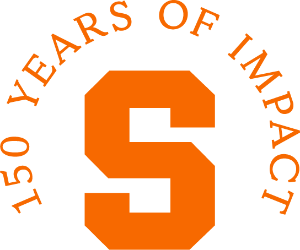
Based on a presentation by Associate Professor Ed Bogucz, Mechanical & Aerospace Engineering, Syracuse University
Written by Renee Levy
When SyracuseCoE headquarters opened in 2010, it became a pioneering building in the city, the region and, perhaps, New York state. One of Syracuse’s first LEED Platinum buildings, SyracuseCoE was built as a showcase of green building technology; a living lab where such technologies are developed and tested; and a hub for technology transfer, connecting student and faculty researchers at Syracuse University, SUNY-ESF, SUNY Oswego and Upstate Medical University with local industry to develop technologies and commercialize innovative products for market.
One hundred years earlier, at the same location—on the corner of East Washington and Almond streets—Lyman C. Smith built the L.C. Smith and Bros. Typewriter Company. Smith was an innovator, local industrialist and benefactor of engineering education at Syracuse University. That symbiosis is no aberration. Syracuse University’s 150-year history is deeply intertwined with innovation and entrepreneurship in the region.
When Syracuse University opened its doors in March 1870, Syracuse was a boomtown and the 29th largest city in the United States. The city’s growth had been fueled by the opening of the Erie Canal in 1825, which along with construction of multiple rail lines, established Syracuse as a thriving hub for advances in civil engineering and canal-to-rail intermodal transportation.
A Cradle of Industry and Innovation
Syracuse’s first known industrial incubator was the C.E. Lipe Machine Shop, established in 1880 by mechanical engineer Charles Lipe. At the 20,000-square-foot Lynch Building on South Geddes Street, Lipe worked on his own inventions and rented space to others, including Herbert Franklin, Alexander Brown and Smith, originally known for the L.C. Smith shotgun. The Lipe Shop became recognized as the “cradle of Syracuse industry” with a prowess for precision manufacturing: the ability to make small parts accurately.
Lipe and Brown invented the Hy-Lo Bi-Gear for bicycles. They later turned their attention to gears and transmissions for the auto industry. Franklin was experimenting with automobile design, and the first Franklin automobile was built at the Lipe Shop. Brown also teamed with Smith on improving the design of the typewriter. Along with Smith’s brothers, Wilbert Smith and Hurlburt W. Smith, they established the Smith Premier Typewriter Works and L.C. Smith and Bros. Typewriter Company, which later became Smith Corona.
In 1901, Lyman Smith donated $75,000 to Syracuse University to build Smith Hall and establish the L.C. Smith College of Applied Science. He later gave $40,000 to build Machinery Hall, all an effort to bolster engineering education.
View the full-color PDF with all historic photos and timeline
By the 1920s, Syracuse’s largest employer was Franklin Automobile, with 5,000 workers. The company’s founder, Herbert Franklin, endowed the Franklin Chair in Transportation at Syracuse University (now known as the Franklin Chair in Supply Chain Management). The company had developed a new type of air-cooled engine that made its product lighter and more responsive than other automobiles at the time, which used conventional water-cooled engines. The air-cooled engine offered a significant reliability advantage in cold climates, given that antifreeze had not yet been invented.
Despite its technological sophistication, discounted pricing and the Great Depression led to Franklin Automobile’s demise, and the company declared bankruptcy in 1934, leaving behind a technologically skilled workforce with no jobs and a large, empty factory.
Local business leaders raised a $250,000 incentive to attract a manufacturing company to Syracuse. Investigating the possibilities, they were successful in recruiting the rapidly growing Carrier Air Conditioning Company. Willis Carrier had invented air conditioning in Buffalo in 1902 to solve the challenge of humidity control in printing plants. When Carrier’s employer ended production of the novel technology in 1914, Carrier started his own company in Newark, New Jersey. In 1922, Onondaga Pottery in Syracuse became the first customer to use Carrier’s new centrifugal chiller.
In 1937, Carrier consolidated its manufacturing from four locations in New Jersey and Pennsylvania to the former Franklin Automobile factory in Syracuse. The company grew quickly.
During World War II, the federal government built a factory in DeWitt, a Syracuse suburb, for General Electric to build jet engines. After the war, the site was auctioned off. There were two bidders: Carrier Corporation—which needed larger manufacturing facilities—and Syracuse University—whose enrollment had tripled with Chancellor William P. Tolley’s strategic decision to open the doors to returning veterans on the G.I. Bill. Ultimately, the site was divided between the two.
In 1947, Carrier moved to the larger manufacturing complex off Thompson Road. (When a traffic circle was built in front of the plant in the 1950s, it was named Carrier Circle.) The L.C. Smith College of Engineering moved from Smith and Machinery halls to buildings adjacent to the Carrier Corporation. Engineering students from that time period recall being bused from the main campus to Thompson Road, where engineering classes were held from 1948 to 1952.
By the late 1970s, Carrier had grown to become the world’s largest air conditioning company, with more than 7,000 employees in Syracuse, in research and development, manufacturing and administration. In 1979, Carrier was acquired by United Technologies Corporation (UTC). By 2004, UTC moved Carrier’s headquarters to its own headquarters near Hartford, Connecticut, ending manufacturing in Syracuse. Approximately 1,300 research and development employees remained, and more importantly, so did much of the engineering brain trust that would become crucial to the creation of SyracuseCoE.
Responding to Industry Needs
But Carrier was far from the only innovation industry in town. Beginning in the 1960s, long before Silicon Valley, Syracuse developed as a hub for electronics and instrumentation, with key firms including Welch Allyn, GE Electronics Park, Anaren, Inficon, Martin Marietta and Thomson Consumer Electronics. At the same time, there were parallel developments at Syracuse University in the creation of related academic programs to meet the needs of emerging industries. For example, Syracuse University has the second oldest computer engineering program in the country, due to a longstanding relationship with IBM. Other innovative programs included a bachelor’s degree in environmental engineering, a minor in energy systems and a master’s degree in energy systems.
Central New York was also home to a cluster of successful engineering firms, most prominently O’Brien and Gere, founded by William Stanton Gere, a 1917 graduate of Syracuse University and son of one of Syracuse University’s first known civil engineering graduates, William Anson Gere, who earned his degree in 1884.
Ed Bogucz, founding director of SyracuseCoE, came to the L.C. Smith College of Engineering as a young faculty member in 1985, attracted by the University’s proximity to Carrier Corporation and the possibility of research collaboration through SU’s newly established Center of Advanced Technology in Computer Applications and Software Engineering (CASE) Center. It was a good move. His first sponsored research project was a project for Carrier funded through the CASE Center.
In the early 1990s, Syracuse University Chancellor Kenneth Shaw led a process to reduce the University’s budget and better respond to market demands. As part of the restructuring effort, the University combined the L.C. Smith College of Engineering and the School of Computer and Information Science to create the College of Engineering and Computer Science (ECS). In 1995, Bogucz was named ECS’s interim dean, charged with developing a strategic plan for the college as it completed its downsizing.
Bogucz’s vision was to strengthen ECS by hiring faculty members in areas that aligned with strengths in the local economy and to strengthen collaborations with local firms. At the same time, the Metropolitan Development Association (MDA) was developing Vision 2010, a blueprint to strengthen the CNY economy. The regional blueprint identified seven key CNY industry clusters, including environmental quality and energy systems. In 1996, the College of Engineering and Computer Science adopted a strategic plan that included investments in faculty and facilities aligned with Vision 2010 priorities. In July 1996, Bogucz was named ECS’s dean, charged with implementing the plan.
To advance Vision 2010, the MDA organized working groups for each industry cluster. The working group for environmental and energy systems was co-chaired by Cornelius B. Murphy G’70, chief executive officer of O’Brien & Gere. In 1998, the group invited Bogucz to facilitate a brainstorming of possible areas for collaboration among Central New York companies. What emerged was a plan to develop new technologies for green buildings, an idea being developed by the fledgling U.S. Green Building Council and supported strongly by Carrier.
Planting Seeds for SyracuseCoE
From there, things moved quickly. In 1999, the College of Engineering and Computer Science recruited Jensen Zhang, the first faculty member hired to build capacity in areas related to indoor environmental quality. The following year, the MDA, now known as CenterState CEO, launched the New York Indoor Environmental Quality (NYIEQ) Center to promote regional university-industry collaborations. In 2001, Bogucz led efforts on a successful proposal to the state to establish the Environmental Quality Systems (EQS) Strategically Targeted Academic Research (STAR) Center, led by Syracuse University in collaboration with the NYIEQ Center, MDA and 10 academic and research institutions. H. Ezzat Khalifa, director of Carrier R&D programs at United Technologies Research Center, was hired to lead the EQS STAR Center.
Later that year, New York State announced a new Centers of Excellence program to foster collaboration between the academic research community and the business sector to develop and commercialize new products and technologies. In 2002, SyracuseCoE was established by New York State as one of the first five statewide Centers of Excellence, leveraging activities of the NYIEQ and EQS STAR centers, with a mission to encourage and fund collaborative projects that develop new environmental and energy systems products and services, serving as a conduit between university researchers and industry.
Since its creation, SyracuseCoE has supported more than 200 projects that assisted more than 70 local companies, which report creating or retaining more than 1,100 jobs to date. In addition, SyracuseCoE has supported more than 50 Syracuse University faculty members in seven schools and colleges through its Faculty Fellows Program, which provides competitively awarded funding for seed projects.
In 2009, SyracuseCoE hosted the ninth International Society of Indoor Air Quality and Climate Healthy Buildings conference and exhibition, which attracted more than 1,700 attendees from 44 nations. The following year, SyracuseCoE opened its LEED-Platinum living laboratory headquarters in downtown Syracuse, on the brownfield that was the site of the L.C. Smith and Bros. typewriter factory. A thriving hub for industry-University collaboration and an anchor to Syracuse’s Innovation Crossroads, SyracuseCoE’s unique facilities have attracted international research teams, including the groundbreaking COGfx Study on the impact of indoor environmental quality on human cognition led by the Harvard T.H. Chan School of Public Health in 2014.
Last year, leading researchers from 33 countries gathered in Syracuse for the seventh International Building Physics Conference, hosted by SyracuseCoE and chaired by Zhang, Syracuse University professor of mechanical and aerospace engineering. It was the first time that the triennial meeting, the world’s premier building science conference, was held in the United States, attracted to Syracuse by the cutting-edge research and innovation related to indoor air quality, energy efficiency and high-performance building technologies.
Syracuse University and the Central New York community are undisputed leaders in the field, all because Syracuse University had the foresight to build programs, hire faculty and invest in facilities in areas relevant to local industry. The result: significant impact on our regional economy, our built environment and natural environments and our water resources.
Innovation Fund Call for Proposals
2020 Innovation Fund Call for Proposals Now Open to Partner Firms!
LEARN MORE AND APPLYSyracuseCoE invites proposals to the Innovation Fund from current SyracuseCoE Partner companies for up to $10,000. It is anticipated that there will be five awards. The Innovation Fund is funded by SyracuseCoE Partner Program and is designed to help companies commercialize products and technologies that have the potential to transform and innovate the market. You must be a member to apply, but it’s not too late, you can join the SyracuseCoE Partner Program today! Projects must be aligned with one or more of SyracuseCoE’s three core areas:
- Indoor Environmental Quality and Building Energy Efficiency
- Clean & Renewable Energy
- Water Resources
Previous companies who were Innovation Fund winners include:
- Air Innovations
- Bush Technical
- cocoon construct
- Ducted Turbine
- Edison Innovative Power
- Ephesus Lighting
- Farm to Flame Energy
- King + King
- LC Drives
- NuClimate Air Quality Systems
- SparkCharge
- Taitem Engineering
- Wex Energy
Visit the Innovation Fund Projects page to see how other Partners have used these funds. The application deadline is 5:00pm EST, Friday, March 20th, 2020.
Industry Partners Innovation: Innovative Air Handling
Technology transfer from a Syracuse University lab to local business could revolutionize the residential HVAC market.
When Upstate Parts & Supply needed engineering help to develop a new HVAC unit, it turned to SyracuseCoE, which connected the company to faculty members in Syracuse University’s College of Engineering and Computer Science (ECS). With assistance from SyracuseCoE and ECS faculty, Upstate successfully developed and commercialized its NuClimate Chilled Beam, which was subsequently licensed by Carrier, sold to Zehnder Group and has been installed all over the world.
If we’re successful, you could see new residential HVAC products on the market using this technology by 2025, not to mention the possibility of adapting the technology to retrofit current units. This is potentially a billion-dollar market.
John A. DiMillo
That track record is one reason ECS faculty members Thong Dang and Mehmet Sarimurat are partnering with Upstate Parts & Supply to pursue development of a concept developed in their SU lab that could revolutionize the residential HVAC market. Dang and Sarimurat envisioned developing a compact, high-efficiency air handler for residential HVAC systems that they believe will use 35 percent less energy than current models.
SyracuseCoE staff members assisted Upstate Parts & Supply and Syracuse University in developing a successful proposal to the U.S. Department of Energy for Phase 1 small-business technology transfer (STTR) projects. The $200,000 grant was the first federal Small Business Technology Transfer (STTR) funding the firm has received in its 33-year history and one of only 12 awards the DOE’s Building Technology Office funded nationwide, demonstrating strong promise for the concept.
“The collaboration between SyracuseCoE, SU faculty and Upstate Parts & Supply is a model example of what SyracuseCoE does—providing a bridge to transfer SU technologies to a small company to aid commercialization that will eventually benefit the regional economy, consumers and the environment,” says Tammy Rosanio, associate director of partner programs.
The project seeks to develop a novel air handling unit for residential heating and cooling systems that synergistically integrates its fan and heat exchanger. This innovation, if successful, could produce an air handler that, compared to conventional units, is 30 percent smaller and uses 35 percent less energy, all while improving the overall performance of its HVAC system by at least seven percent.
Upstate Parts & Supply received the STTR grant July 1. According to John A. DiMillo, a company vice president, the Phase I grant supports advanced computational fluid dynamics studies performed by SU faculty and students to evaluate and refine feasibility of the concept. SyracuseCoE helped jump-start the project through work done this summer by students and faculty in SyracuseCoE’s Analysis and Design Center under the TEC Innovates program. A team of students will also be working with Upstate Parts & Supply during the academic year under a mechanical engineering capstone project to design and build a test stand that is capable of measuring the performance of an air-handler unit, work also supported by the TEC Innovates program.
The goal is to demonstrate feasibility by the end of June 2020 and pursue a Phase 2 grant. A successful Phase 2 grant of $1 million would support building and testing a prototype unit.
SyracuseCoE Awards Funding for 8 Research and Innovation Projects Led by Faculty Fellows
Projects engage 15 faculty members from 4 universities and a local startup partner
SyracuseCoE announced today that eight research and innovations projects led by its Faculty Fellows were competitively selected to receive awards totaling $109,368. The new projects engage 15 cross-disciplinary faculty members from Syracuse University, SUNY College of Environmental Science and Forestry (ESF), SUNY Oswego and SUNY Upstate. In addition, Density, Inc. a SyracuseCoE industry partner company, is a co-investigator on one project.
The SyracuseCoE Faculty Fellows Program supports seed projects that strengthen faculty scholarship in clean and renewable energy, indoor environmental quality, and water resources. The program brings together a diverse community of faculty members from many disciplines. Researchers from four schools and colleges at Syracuse University, two at SUNY ESF, one from SUNY Oswego and one from SUNY Upstate received awards.
The goal of Faculty Fellows program is to bolster collaboration and discovery, strengthening Syracuse University’s growing research portfolio. The program is critical to SyracuseCoE’s core mission to create innovations in environmental and energy technologies. In addition, projects are encouraged to strategically target research topics that contribute to economic development of local and New York State businesses.
“We are extremely proud of the momentum that the SyracuseCoE Faculty Fellows Program has had in the past 4 years, growing to nearly 60 researchers,” said Laura J. Steinberg, SyracuseCoE interim executive director. “These awards can lead to a significant “next step” for faculty by fostering further exploration, allowing them to publish new findings or even by helping them to win additional funding.”
The projects, principal investigators (listed first), and their collaborators are:
A High-throughput Analytical Workflow for Identification and Quantification of Cyanobacterial Toxins in Environmental Water Samples
- Teng Zeng, Assistant Professor, Civil & Environmental Engineering, College of Engineering and Computer Science, Syracuse University
A New Approach to Evaluate Energy Savings, Thermal Comfort and IAQ from Occupant-Centric Building Controls
- Bing Dong, Associate Professor, Mechanical & Aerospace Engineering, College of Engineering and Computer Science, Syracuse University
- Meng Kong, Research Assistant Professor, Mechanical & Aerospace Engineering, College of Engineering and Computer Science, Syracuse University
- Steven VonDeak, Co-founder and Chief of Staff, Density, Inc
- Jianshun Zhang, Professor, Mechanical & Aerospace Engineering, College of Engineering and Computer Science, Syracuse University
Development of Improved Poplar Lines for Biofuel Production
- Heather Coleman, Associate Professor, Biology, Biotechnology, College of Arts & Sciences, Syracuse University
Establishment of Initial Exploratory Research for the Mycelium Research Group
- Daekwon Park, Assistant Professor, Syracuse Architecture, Syracuse University
- Jeongmin Ahn, Associate Professor, Mechanical & Aerospace Engineering, College of Engineering and Computer Science, Syracuse University
- Zhao Qin, Assistant Professor, Civil & Environmental Engineering, College of Engineering and Computer Science, Syracuse University
- Nina Wilson, Assistant Professor, Syracuse Architecture, Syracuse University
Measuring the Vertical Profile of Air Pollution and Noise Near Interstate-81
- Jamie Mirowsky, Assistant Professor, Chemistry, SUNY College of Environmental Science and Forestry
- Judy Crawford, Visiting Researcher, SUNY Upstate Medical University
- John Hassett, Professor, Chemistry, SUNY College of Environmental Science and Forestry
- Meng Kong, Research Assistant Professor, Mechanical & Aerospace Engineering, College of Engineering and Computer Science, Syracuse University
Net Zero Retrofit Campus Housing Pilot Project
- Nina Wilson, Assistant Professor, Syracuse Architecture, Syracuse University
- Bing Dong, Associate Professor, Mechanical & Aerospace Engineering, College of Engineering and Computer Science, Syracuse University
Production and Evaluation of Activated Biochar from Shrub Willow for Water & Wastewater Treatment Applications
- Nosa Egiebor, Professor, Environmental Resources Engineering, SUNY College of Environmental Science and Forestry
- Tao Wendong, Associate Professor, Environmental Resources Engineering, SUNY College of Environmental Science and Forestry
Synthesis of Silicon, Tin and Phosphorus Nanoparticles as Anode Materials for High-Performance Sodium Ion Battery for Grid Scale Energy Storage
- Mohammad Islam, Associate Professor, Physics, SUNY Oswego
Projects were selected based on responses to a request for proposals issued by SyracuseCoE earlier this year. Each faculty member who is involved in a project is appointed as a SyracuseCoE Faculty Fellow for a three-year term. Eight new faculty members have been appointed. The program has supported nearly 60 researchers to date.
SyracuseCoE is New York State’s Center of Excellence in Environmental and Energy Systems, which is led by Syracuse University in collaboration with SUNY ESF, SUNY Oswego, CenterState Corporation for Economic Opportunity and dozens of industry partners.
New York’s Entrepreneurial Ecosystem, Featuring FuzeHub and Ducted Wind Turbines
A SyracuseCoE Research & Technology Forum
It is an exciting time to be an entrepreneur in Central New York! This forum offers guidance on how businesses can use resources like FuzeHub and SyracuseCoE.
New York State offers a host of resources designed to enable new and existing businesses to become more competitive through manufacturing improvements and help with the development of innovative technologies and processes. Centers and programs that are supported by Empire State Development’s Division of Science, Technology and Innovation (NYSTAR) emphasize the importance of working with industry as a way to leverage New York State’s technology strengths to produce new products. The state also offers other innovation development support resources, including financial incentives to foster university collaboration, research and innovation.
Learn more about one of those ecosystem resources, FuzeHub, who provides programs and resources for manufacturers in New York State. Julianne Clothier, FuzeHub’s Industry Engagement Manager, shared information about FuzeHub’s suite of programming designed to ignite growth and prosperity in New York’s manufacturing sector, one manufacturer at a time!
We were also joined by Joe Dickson, CEO Ducted Wind Turbines, Inc., a SyracuseCoE Start-up Partner company based in Potsdam, NY. He shared how NYS supports and programs like the SyracuseCoE Innovation Fund give companies like Ducted Wind Turbines new opportunities for growth and success. Joe also shared sage wisdom from his broad 30-year experience working with six diverse startups within NYS’s entrepreneurial ecosystem.
Presenters:
Julianne Clouthier Industry Engagement Manager, FuzeHub
Julianne oversees the Jeff Lawrence Innovation Fund which is comprised of manufacturing grants, a commercialization competition and an innovation challenge. The Fund provides $1M annually to not-for profits, manufacturers and early-stage technology companies in New York. Julianne has over ten years of economic development experience and has worked on numerous microenterprise, business expansion, and infrastructure projects. She is a member of the Tech Valley High School Business Alliance and serves as a mentor, judge and panelist for numerous innovation and entrepreneurial programs. Julianne received her MBA from the University at Albany, a Bachelor of Arts in Communications from Mercyhurst College and is a recent graduate of AlbanyCanCode -Front End Web Development.
Joe Dickson CEO, Ducted Wind Turbines, Inc.
Joe Dickson, currently the CEO of Ducted Wind Turbines, Inc. and also recently served as a co-founder and the CEO of Pelitex, is a veteran entrepreneur who has served as the founder and/or senior C-Level executive of seven high-tech start-up firms across multiple industry and technology sectors during his 30-year career. His first start-up, a spin out from GE, achieved a 100X ROI in 3 years. Since then he has been a part of 6 other start-ups across industry areas as diverse as advanced materials, IT, renewable energy, microelectronics, medical devices, and biotech.
Mr. Dickson has helped raise over $50MM in venture and private equity capital, and also has extensive experience in mergers and acquisitions. He is an expert in business and financial modeling, market validation, strategic positioning, and business plan execution. Mr. Dickson has taught entrepreneurship at both Cazenovia College and Syracuse University, and was named Entrepreneur of the Year by the Syracuse Citizen’s Foundation in 1992. Mr. Dickson has a BS in Chemistry from Syracuse University and an MBA from the University of Rochester.
Up to $3,000 for SyracuseCoE Partners to Hire an Intern this Summer
SyracuseCoE helps companies provide students with invaluable “real-world” experience
SyracuseCoE is seeking applications from its industry partners for funding available through the 2020 Summer Industry Collaboration Internship Program. The program supports paid internship opportunities for SyracuseCoE Partner Program companies to host a student pursuing a degree in science, engineering, or architecture. Throughout the course of the internship, the student will increase his or her knowledge and technical skills by engaging in hands-on work at SyracuseCoE Partner firms related to indoor environmental quality (IEQ), high performance/green building, clean and renewable energy, and water resources.
In addition to providing experiential learning, the program also aims to give students the opportunity to establish valuable relationships with local industry leaders and increase post-graduation retention in the Central Upstate region of New York. Interns will be invited to SyracuseCoE networking events throughout the summer, and they will develop and present an end-of-summer poster showcasing the project(s) on which he/she worked.
To date, 32 companies and 99 students have participated in this program, which is supported by annual fees paid by companies that participate in the SyracuseCoE Partner Program. This year, SyracuseCoE intends to fund up to 8 summer internships at Partner firms, with each commitment providing up to $3,000 per company. The deadline to apply is February 28th.
Learn more about the member benefits of the SyracuseCoE Partner Program.
Occupant Behavior Driven Smart Building Controls
In the US, people spend 87% of their time in buildings. Understanding dynamic occupant presence and thermal comfort needs is crucial to ensuring that building design and operations provide healthy and productive living and working environments. Occupant behavior is becoming a leading factor for building energy use, but there are challenges to studying occupant behaviors, as they are complex and ever changing. Privacy issues and the high cost of sensors can make data collection difficult. The constant changes in the built environment caused by occupant behavior also result in both physiological and psychological effects on the occupants.
Professor Bing Dong’s presentation covered various research projects related to behavior driven controls and optimization of smart and connected buildings, from behavior-driven individual building energy optimization to urban scale energy management, from equipment level optimal controls to large scale buildings-to-grid integration. Professor Dong concluded with a research vision on behavior-driven urban energy infrastructure planning and management within a smart and connected community.
Steven VonDeak presented the people count sensor platform, Density, Inc. To put it simply — Density counts people. Understanding how many people are in a space helps organizations improve building performance by making them safer, more efficient and more productive. Density’s people counting system places a premium on three key functionalities: anonymity, accuracy, and real-time data availability. This real-time room occupancy provides insight for a variety of use cases including intelligent demand-controlled HVAC operation. Organized in 2014, Density has grown to a 50-person startup and their proprietary hardware/software system is all assembled, tested and packaged right in Syracuse, NY.
Moderator:
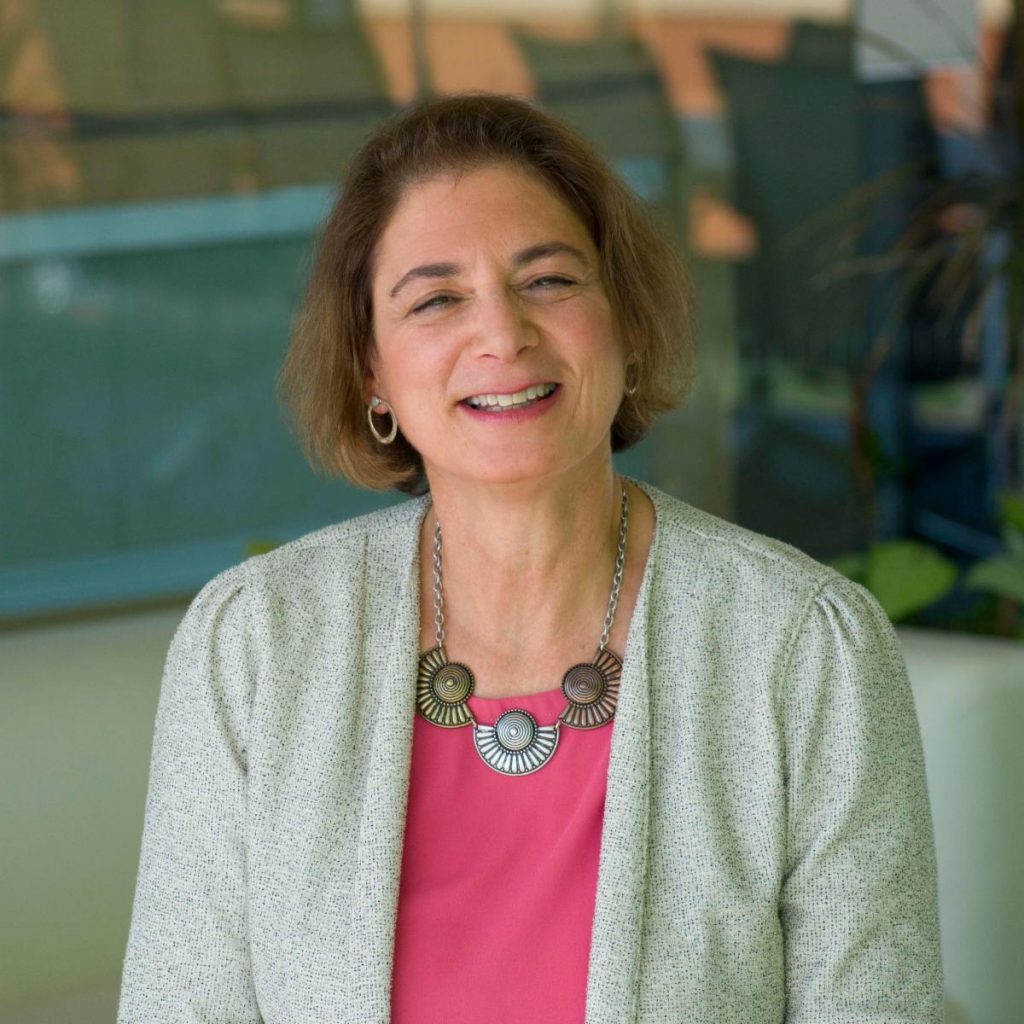
Laura J. Steinberg
Interim Executive Director, SyracuseCoEExecutive Director, Syracuse University Infrastructure InstituteProfessor, Civil & Environmental Engineering, Syracuse University
Dr. Steinberg’s research focuses on environmental phenomena’s effect on infrastructure, including how climate change is impacting infrastructure and environmental disasters. Her areas of expertise include environmental modeling and policy, diffusion of innovation, and critical infrastructure protection.
Presenters:
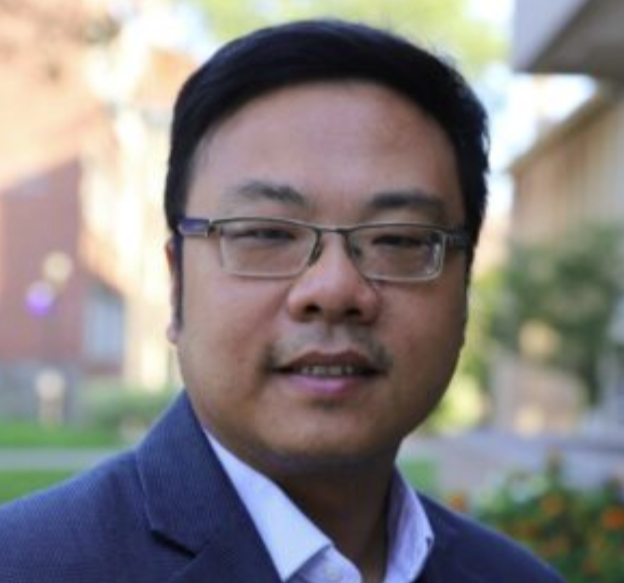
Bing Dong
Associate Professor, Mechanical & Aerospace Engineering, College of Engineering and Computer Science, Syracuse UniversitySyracuseCoE Faculty Fellow
Dr. Dong has more than 15 years experiences in building energy performance simulation, building controls and HVAC FDD. He is also actively involved in the projects related with occupancy behavior modeling in buildings, machine learning for sustainability, wireless sensor network in buildings and building information modeling. He has published more than 50 peer reviewed papers. His papers are cited more than 400 times by other researchers around the world. He specializes in Occupancy Behavior Modeling, Energy Performance M&V, Model-based Building HVAC Controls; Energy Performance Simulation, HVAC FDD and BIM.
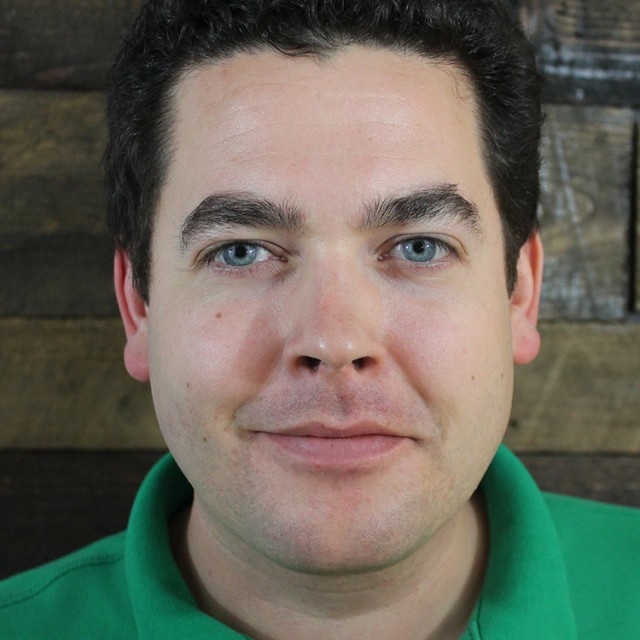
Steven VonDeak
Co-founder and Chief of Staff, Density, Inc.
Steven VonDeak is a co-founder and Chief of Staff at Density Inc, a 50-person venture-backed enterprise IoT company. Incorporated in 2014, Density helps organizations improve the performance of their space by making it safer, more efficient, and more productive. From 2014 to 2019, VonDeak has been responsible for supporting the varied operational needs of Density, including: finance, legal, and human resources. He is also the general manager of Density’s Syracuse office, where the company was founded and continues to run significant operations today. From 2008 to 2014, VonDeak founded and operated a digital consultancy specializing in web and mobile application development. He holds a JD from Syracuse University College of Law ’08 and a BA from the University of Rochester ’05.
Personal Cooling
Bush Technical personifies SyracuseCoE’s mission to connect companies with students and faculty to develop new technologies.
“The students are solving real problems for real companies looking for real answers. They become much more invested.”
– Bill Bush, Owner of Bush Technical
Medical teams in Africa working to combat contagious viruses such as Zika and Ebola are hindered by their need to wear full body suits in temperatures that often exceed 100 degrees Fahrenheit. Wearing a cooling vest underneath can help, but the electricity required to make the ice used to cool the vest is often not available in remote areas, not to mention the burden of being tethered to a 20-pound cooler.
That’s just one application for a lightweight, battery-operated personal cooling vest being designed by Bush Technical, a one-man consulting and contracting company specializing in compressor technology, with assistance from engineering students at Syracuse University’s College of Engineering and Computer Science.
Bill Bush was a retired Carrier engineer when he was tapped by H. Ezzat Khalifa, Syracuse University professor of mechanical and aerospace engineering, to create a micro-scroll compressor for a SyracuseCoE-led research project funded by the Advanced Research Projects Agency-Energy (ARPA-E). That was 2014.
The project was to develop personal environmental control (PEC) systems for office workers, units that would sit on or under a desk. Bush recalls thinking that the scroll compressor technology the team wanted him to develop wouldn’t provide sufficient efficiency for the system. But it did, exceeding its efficiency target by 17 percent. In networking with other ARPA-E stakeholders, Bush found other markets interested in uses for his ultra-efficient mini compressor
Now fully out of retirement, Bush is an adjunct instructor at the College of Engineering and Computer Science, for the last five years assisting with the senior mechanical engineering design course. For the last two years, and continuing for a third, Bush has also led teams of capstone students working with Bush Technical on refining a wearable system that provides personal cooling.
As a one-man operation, Bush says partnering with the Department of Mechanical and Aerospace Engineering on a capstone project is a win-win situation. Rather than working on an abstract technical challenge, “the students are solving real problems for real companies looking for real answers,” he says.
“They become much more invested.” In turn, he gains valuable engineering assistance while retaining intellectual property rights.
In 2018, students designed a manufacturing process for mass production of the compressor. In 2019, with support from the SyracuseCoE Innovation Fund, they developed a breadboard prototype to prove that the wearable vest technology would work. Bush describes the breadboard prototype as having all of the components connected and operating, without the size restrictions the actual device would require. “It’s basically an open system with easy access to fiddle with and make tweaks,” he says. For 2020, a third capstone team is designing a test facility for both cooling system components as well as for complete cooling systems.
Working from his lab space at SyracuseCoE, Bush is working step by step to refine the system. “Once I’ve got the kinks worked out, another very good capstone project will be to develop it into an actual wearable prototype,” he says. There will also be an opportunity for computer science students to support the development of an application that controls the device through a cell phone app.
Bush credits SyracuseCoE for “snowballing” the entire enterprise—beginning with submission of the ARPA-E proposal for the PEC system, to providing support to help develop his technology, to providing space and infrastructure for Bush Technical at SyracuseCoE headquarters. “This Bush Technical initiative wouldn’t exist without SyracuseCoE,” he says.
Led by Syracuse University, SyracuseCoE engages students, faculty, and collaborators at 200+ firms and institutions to catalyze innovations that improve energy efficiency, environmental quality, and resilience in healthy buildings and cleaner, greener communities.
SyracuseCoE Faculty Fellows Program Now Accepting Applications for 2020
SyracuseCoE—New York State’s Center of Excellence in Environmental and Energy Systems—is offering funding to support seed projects that strengthen faculty scholarship in clean and renewable energy, indoor environmental quality, and water resources. Successful applicants will participate in the SyracuseCoE Faculty Fellows Program, which provides leadership for SyracuseCoE’s core technical areas and supports engagements with academic and industry partners. Funding awarded to seed projects also is intended to catalyze research that will lead to future opportunities, including funding from federal agencies or commercial sources.
The Faculty Fellows Program is open to faculty members who hold full-time appointments at SyracuseCoE Academic Partner institutions: Syracuse University, SUNY College of Environmental Science and Forestry (SUNY-ESF) and SUNY Oswego. All proposals must address how the use of the Faculty Fellow seed funding will lead to a significant “next step” in the research, lead to or leverage follow-on funding opportunities, and contribute to establishing SyracuseCoE and its Partner institutions as thought leaders in the targeted area. In addition, projects are encouraged to strategically target research topics that hold promise for contributing to economic development of local entities and New York State businesses.
SyracuseCoE intends to award up to $75,000 in this round. Proposals for seed projects that engage multiple faculty members may request up to $20,000. Seed projects involving a single faculty member are eligible to receive up to $10,000. The deadline for applications is January 6, 2020.
Driving Entrepreneurship: Exploring Models of Innovation and Supports
Innovation and entrepreneurship come in many shapes and sizes. At this month’s SyracuseCoE Research & Technology forum, we will focus on different models of innovation and growth, including an award-winning student-led start-up, PAANI, that has developed clean water solutions for global health; an internal model of innovation in a global company, Ramboll, that engages students and the community to leverage hyperspectral imaging to address harmful algae blooms; and a federal agency, U.S. Trade Development Agency, that provides grant funding to support U.S. businesses in emerging markets around the world.
Join us for an exciting discussion of unique models of innovation and entrepreneurship and the agencies that support their growth.
Moderator:
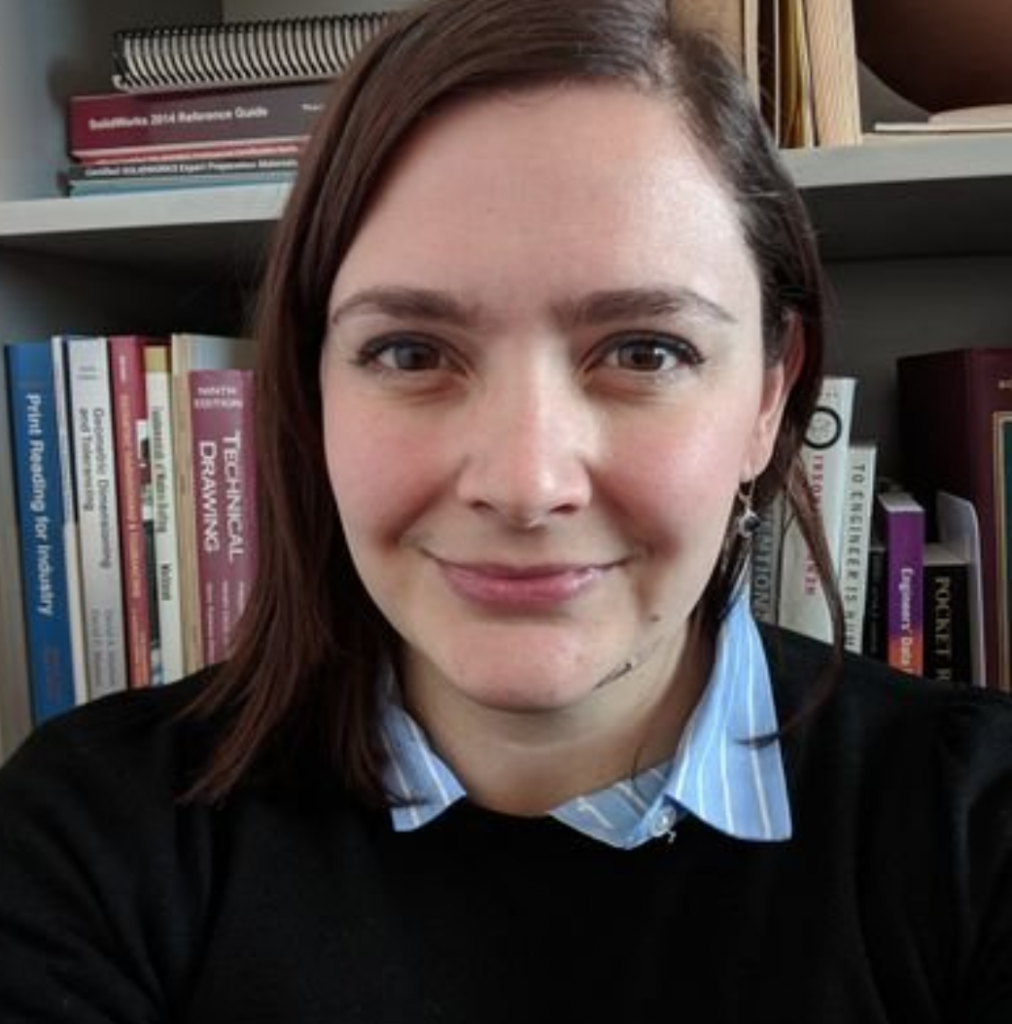
Louise Manfredi, Assistant Professor, Industrial and Interaction Design, College of Visual and Performing Arts, School of Design, Syracuse University
Dr. Louise Manfredi is an assistant professor of industrial and interaction design at Syracuse University, New York and a newly appointed Syracuse CoE Faculty Fellow. Dr. Manfredi is focusing on two new areas of research interest (1) sustainable material testing, development, and adoption and (2) finding methods to improve the working relationship between designers and STEM practitioners. Both research agendas are woven through her teaching; she is always seeking innovative academics and industry partners to work with to create more immersive learning experiences for her students. Prior to Syracuse University, Dr. Manfredi was an assistant professor at Millersville University of Pennsylvania, and a postdoctoral scholar in neuroscience and biomechanics, and entrepreneurship fellow at the University of Chicago. She holds a Ph.D. in mechanical engineering (2011) and a B.Des. in product design (2006) from the University of Leeds, UK.
Presenters:

Nikita Chatterjee ’20, Co-founder & CEO, PAANI, B.S., Economics, The Maxwell School, Syracuse University
Nikita is a rising senior, studying Economics at Syracuse University. She is originally from a small town in North Jersey, and the eldest daughter to two immigrants from Kolkata and Mumbai, India. As a first-generation college student, Nikita credits her success in part to the entrepreneurial resources provided by Syracuse University. After graduation, she plans to go into financial consulting in the healthcare industry in India where she sees a great need due to low availability of resources.

Brianna Howard ’20Co-founder, PAANI, B.S., Public Health, The David B. Falk College of Sport and Human Dynamics, Syracuse University
Falk College of Sport and Human Dynamics, Syracuse University
Brianna is a first generation college student from Queens, NY. As a Public Health major at Syracuse University, her passion is to advocate for underserved communities who lack access to the proper resources and tools necessary to live a healthy life. Brianna’s first exposure to global health began on a trip to South Africa in high school where she worked with a non-profit to promote access to education. In the future she hopes to work on similar projects like this to empower communities globally. In whatever career path she chooses, her goal will always be to save and impact lives as well as to give a voice to the people who are most often silenced.
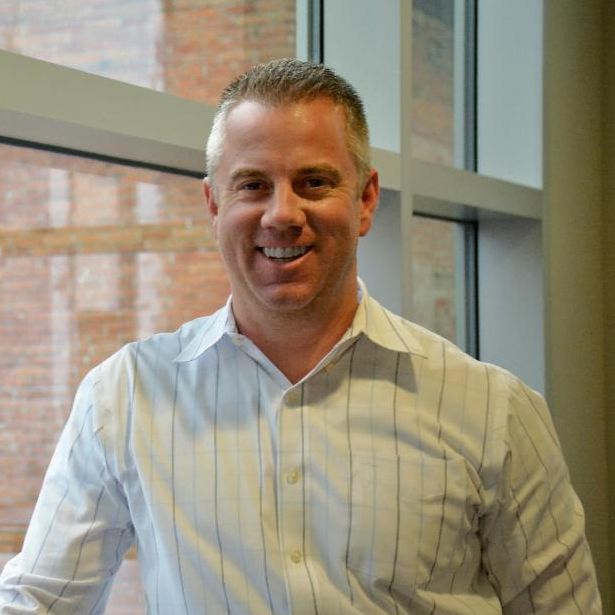
Jamie Newtown, Director of Innovation, Ramboll
Mr. Newtown is the Director of Innovation at OBG (Part of Ramboll). In this position Mr. Newtown manages the Company’s ideation and execution process. As a founding member, he worked to establish the program, grow support for innovation initiatives through cultural activities such as SPARK and I-Factor, and identify ways to leverage the collective intelligence of the Company to differentiate from the competition. Responsibilities have included strategy and action plan development, leadership of the Innovation & Technology Committee, digitalization development, and evaluation of new business models stemming from the great ideation developed within the organization. Mr. Newtown also serves as the resource manager for a group of environmental, health, and safety (EHS) compliance practitioners. This group provides technical delivery of solutions for clients.
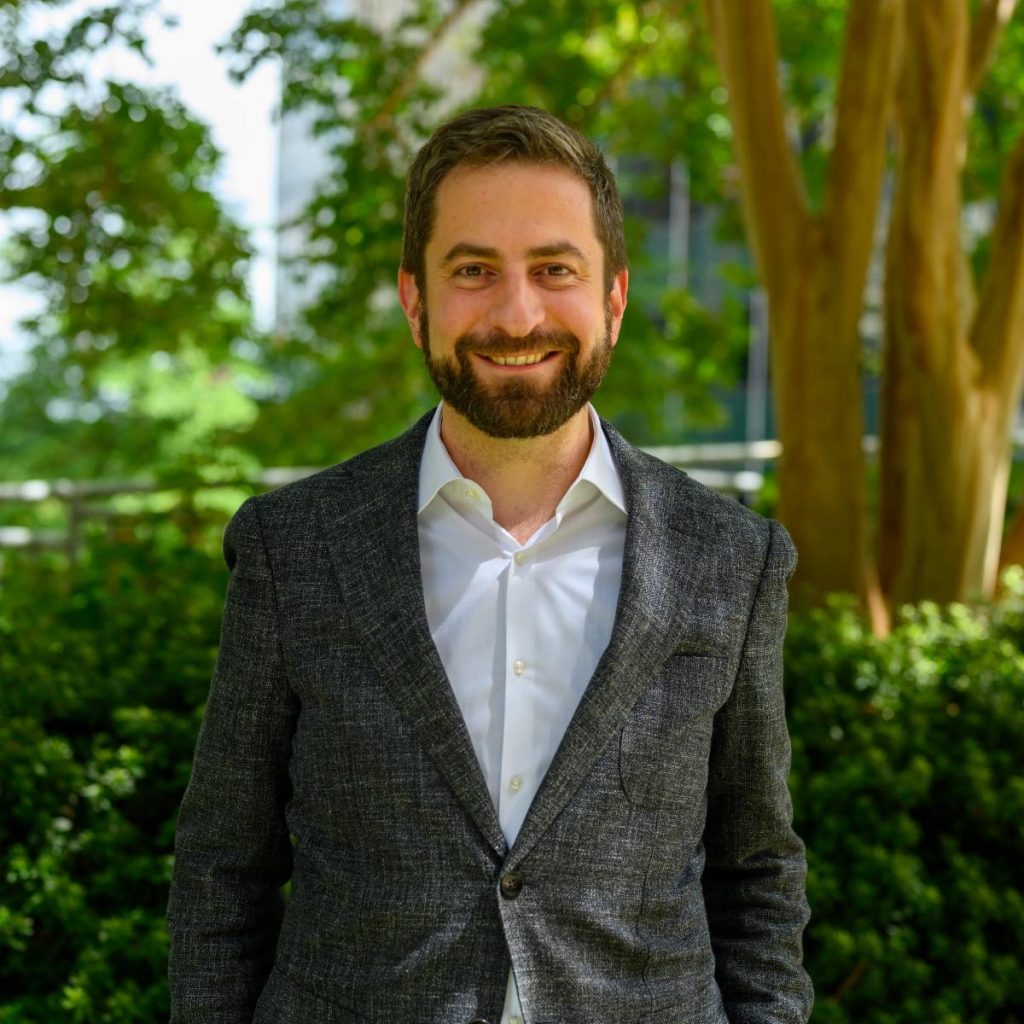
David Riposo, Financing & Implementation Manager, U.S. Trade and Development Agency
As the Financing & Implementation Manager for the U.S. Trade and Development Agency’s sub-Saharan Africa team, David Riposo directs a portfolio of more than 70 clean energy projects in sixteen African markets. Mr. Riposo’s portfolio features a spectrum of technologies and scales, from gas infrastructure in the Niger delta to utility-scale wind and solar projects in frontier markets and portfolios of mini-grids in remote communities. Before joining USTDA, Mr. Riposo led donor-funded energy access programs in Africa and South Asia for five years, including a USAID-funded cookstove market development program that led to the deployment of 40,000 fuel efficient stoves in Bangladesh. Previously, he was a strategy consultant advising companies and governments on clean energy markets and technologies. His professional experience also includes establishing a renewable energy consulting business in India and helping hundreds of wind and solar project developers define the pre-construction energy generation potential of their projects. Mr. Riposo earned a B.S. from the State University of New York, College of Environmental Science and Forestry and an M.S. from the University of Maryland, College Park.
Bird’s Eye View
Students take unusual approach to the problem of harmful algae blooms at Ramboll Think Tank at SyracuseCoE.
“Between the resources available and the proximity to the Tech Garden and Ramboll office downtown, SyracuseCoE was a great environment for the interns to develop and grow their network.”
– Jamie Newton, Director of Innovation, Ramboll
Harmful algae blooms (HABs) have become a growing threat to the ecological, recreational and economic services provided by waterways in New York state due to toxins that can cause sickness and fatality among people, pets, livestock and wildlife. Due to their ephemeral nature—they can grow rapidly and be moved by wind and water currents—HABs are difficult to characterize and manage.
A team of college students from Syracuse and Clarkson universities is promoting the use of unmanned aerial systems (drones) to collect information pertaining to HABs and associated patterns of lake dynamics to better understand where and how HABs develop and guide how they can be managed.
Ramboll hired the six students—Haleem Alakiu ’20, Trufat Emanuel ’20 and Bryan King ’20 from Syracuse University and Noah Poirer, Kaitlin Rossiter and Adam Sherwood from Clarkson University— who spent the summer engaged in the first-ever Ramboll Think Tank, housed at SyracuseCoE. During its 11-week internship, the team studied a health and environment statement around HABs, developed ideas to collect and quantify data, and engaged industry and municipal partners to validate the uses and demand for such information.
Ramboll is a global engineering, design and consultancy company that acquired Syracuse-headquartered engineering and design consultancy OBG on January 1. According to Jamie Newtown, director of innovation at Ramboll, the Think Tank was an outgrowth of OBG’s SPARK competition, a 24-hour innovation think tank where teams of college students brainstorm and problem solve to find innovative solutions to real- world industry challenges.
“We recognized there was a lot of talent within these SPARK programs and decided to extract the top talent out of a competition held in Central New York to help with our own innovation,” he says.
Holding the Think Tank at SyracuseCoE was natural. OBG was a founding Industry Partner, and Neil Webb, Ramboll director of growth and markets, chairs the SyracuseCoE Partners Council. SyracuseCoE has partnered on SPARK, hosting numerous Central New York competitions.
“SyracuseCoE was the perfect collaborative environment for the Think Tank to meet,” says Newtown. “Between the resources available there and the proximity to the Tech Garden and Ramboll office downtown, it was a great environment for the interns to develop and grow their network.”
In August, the Think Tank team participated in Drones Over Downtown in Syracuse and the following week made a poster presentation at the SyracuseCoE Innovation Showcase with additional support from Syracuse University Blackstone Launchpad. Their work culminated with submission of an application to GENIUS NY, the world’s largest business accelerator program for unmanned systems.
“Their goal is to be selected for 2020 and be able to create and launch a new business to refine their idea,” says Newtown.
Regardless of the outcome, the interns found the Think Tank experience an invaluable addition to their education.
“A lot of engineering is physics and math,” says King, an engineering major. “This internship allowed me to develop business and networking skills, allowing me better insight into other avenues I could pursue with my combined engineering and newfound business knowledge.”
Led by Syracuse University, SyracuseCoE engages students, faculty, and collaborators at 200+ firms and institutions to catalyze innovations that improve energy efficiency, environmental quality, and resilience in healthy buildings and cleaner, greener communities.
Nine Companies Selected to Receive Funding to Advance Innovations
SyracuseCoE gives Innovation Fund Awards to Partners to help commercialize innovative products and services
SyracuseCoE announced that it has selected nine companies from CenterState/Upstate/Central New York to receive awards from its 2019 SyracuseCoE Innovation Fund competition. SyracuseCoE’s Innovation Fund Program is designed to target specific barriers to the commercialization of potentially transformative innovations by companies who are members of the SyracuseCoE Partner Program.
The nine award-winning projects are:
Acumen Detection was awarded Innovation Fund support to expand the commercial use of their existing patented technology (the Acumen PCR®MYCOB assay) by development of a screening test to detect Mycoplasma bovis from deep nasal swabs of cattle. Early detection of Mycoplasma in cattle will aid in making timely and accurate herd management decisions and enable the farmer to increase their profits by saving the energy wasted on feeding, housing and treating sick and non-productive animals those can spread the disease to healthy animals.
LC Drives received an Innovation Fund award to support its development of the next generation of are smaller, lighter, more efficient electric motors. This project will help the company scale the machine design and related manufacturing equipment on the path for use in utility scale wind turbines ultimately reducing the cost of wind power.
Cocoon construct is developing a prefabricated panelized system to unlock the market for whole‐building deep energy retrofits in New York State and create jobs at multiple manufacturers throughout the product’s supply chain. The proposed project will support the design of a proprietary attachment system for affixing Cocoon prefabricated wall panels to existing building structures, as well as modeling and simulation to validate the system’s performance.
Cocoon construct also received support in 2019 for a second project designed to develop a Certification Test Plan for their prefabricated panelized system. The project will include product compliance and testing protocols with the dual objectives of informing the work undertaken by a Syracuse University Mechanical Engineering Capstone project team and ensuring that the system can be tested, certified and warrantied for long‐term performance, thus enhancing its commercial readiness. Successful commercialization of the envisioned product promises to accelerate the market for deep energy retrofits and create jobs at multiple manufacturers throughout the product’s supply chain.
Ducted Turbines International (DTI) is commercializing a ducted turbine technology and received funding support to address the power electronics that connect the turbine to the grid and the manufacture of a robust blade system. With the focus on a quality supply chain that will enable a long-term reduction in the cost per unit energy ($/kWh), DTI hopes to remove these barriers, creating a ‘Turbine in a Box’ solution that will provide power everywhere to anyone. The project will demonstrate the development with a full-scale turbine test at the Clarkson Wind Turbine Test Site.
DTI also received an award in 2019 to help reduce the cost of its turbine duct by integrating a rotational molding manufacturing product that can significantly reduce the cost of the duct, speeding the path to commercialization.
Edison Innovative Power is developing the world’s first SMART, configurable, multi-output high-voltage system. The company received an Innovation Fund award to perform multiple iterations of advanced thermal simulation and analyses to drive design optimization and verification prior to moving to production.
Farm to Flame Energy has developed biomass-powered generators and grinders are smokeless, odorless and easy to manage. The company received an Innovation Fund award to develop a demonstration unit that will advance their path to commercialization.
Ramboll is in the process of establishing BloomOptix as a start-up and will enter the GeniusNY competition in October 2019. The Innovation Fund program funding will be used for the purchase of a hyperspectral sensor and unmanned vehicle technology that will contribute to the future commercialization of the BloomOptix team’s innovation.
tkFabricate was awarded an Innovation Fund project to support the design and construct a prototype “Integrated Mechanical Systems Pod (IMSP)” sized to provide space conditioning (heating and cooling) and domestic hot water for individual attached single-family homes in the Syracuse Housing Authority’s “Scattered Sites” residences. This packaged mechanical unit will include air-to-water heat pumps and be an integral part of full building deep energy retrofits targeting increased thermal comfort and indoor air quality while achieving 75% energy use reduction when measured from existing building loads, thus enabling the residences to be capable of net zero energy use with subsequent installation of photovoltaic panels.
Vistex Composites received funding to perform product trimming in-house at their manufacturing facility and improve safety & air quality (Helps meet OSHA Standard 1910.1000 (air contaminants)). This will eliminate the frustrations associated with the two current options which are: 1. Attempting to perform trimming manually with facemask and air filter which can be unsafe; or 2. Outsourcing this portion of the manufacturing process – causing the company to lose production opportunities (significant unnecessary costs make price non-competitive & drastically extends lead times).
“Central New York companies, like those in the SyracuseCoE Partner Program, have an entrepreneurial spirit and a history of pioneering innovation”, said Laura J. Steinberg, SyracuseCoE’s interim executive director. “The SyracuseCoE Innovation Fund awards help collaborating companies bridge gaps in the commercialization process and ultimately contribute to stronger companies and products that have a greater chance of success in the marketplace. ”
SyracuseCoE is New York State’s Center of Excellence for Environmental and Energy Systems. Funding for the SyracuseCoE Innovation Fund is provided by industry members of the SyracuseCoE Partner Program. The nine awards in the current round total $107,146. To date, awards from the program have totaled $467,345 and supported 43 clean energy projects at 27 companies throughout New York State. Eligibility for Innovation Fund awards is open to all current members of the SyracuseCoE Partner Program. The next call for proposals is expected in February of 2020. Applicants submit a proposal online and then pitch their project to a panel of reviewers from the region. To learn more about joining the SyracuseCoE Partner Program, contact Tammy Rosanio at tlrosani@syr.edu.
Lessons Learned from Monitoring and Re-Commissioning New York State’s Portfolio of CHP Systems
Presenter:
 Mr. Henderson is a Principal Consultant at Frontier Energy with more than 30 years of experience evaluating energy technologies through on-site evaluation, field monitoring, and energy simulations. His areas of expertise include innovative HVAC systems, CHP, industrial processes, and heat recovery. Mr. Henderson holds both Bachelors and Masters Degrees in Agricultural (Mechanical) Engineering from Cornell University. He is a professional engineer in Florida and New York State. He is an active member in several ASHRAE society-level committees.
Mr. Henderson is a Principal Consultant at Frontier Energy with more than 30 years of experience evaluating energy technologies through on-site evaluation, field monitoring, and energy simulations. His areas of expertise include innovative HVAC systems, CHP, industrial processes, and heat recovery. Mr. Henderson holds both Bachelors and Masters Degrees in Agricultural (Mechanical) Engineering from Cornell University. He is a professional engineer in Florida and New York State. He is an active member in several ASHRAE society-level committees.Old School Meets New School: King + King Architects Transform an 1849 Schoolhouse into a High-Performance, Low-Carbon Residence
Research & Technology Forum Series
Research to Commercialization: Upstate Parts & Supply Teams with Syracuse University to Win $200,000 to Evaluate Next-generation HVAC Technology
Upstate Parts and Supply, Inc. from East Syracuse, NY leveraged assistance from TEC Innovates and a collaboration with Syracuse University to win a $200,000 grant from the U.S. Department of Energy (DOE) Small Business Technology Transfer (STTR) program to evaluate the feasibility of a next-generation residential HVAC air handler.
The project is intended to improve the energy efficiency of HVAC systems used in homes. Upstate Parts & Supply, Inc. will collaborate with Syracuse University researchers to develop a next-generation Compact, High-Efficiency Air Handling Unit (CHE-AHU) for residential heating, ventilation and air conditioning (HVAC) systems. The CHE-AHU will synergistically integrate the fan and heat exchanger, which is expected to reduce energy consumption of the air handler by at least 35%, improve the overall performance of the HVAC system by at least 7%, and reduce overall size by at least 30% compared to current technologies.
The TEC Innovates program identified the DOE funding opportunity and facilitated a collaboration between Upstate Parts & Supply and Professors Thong Dang and Mehmet Sarimurat of Syracuse University’s Department of Mechanical and Aerospace Engineering to develop the project, which is based on technology developed previously by Prof. Dang and his students. TEC Innovates, which is supported with funding from the U.S. Department of Commerce, spurs innovation and entrepreneurial activity in the Central New York region to develop new and improved products for “Thermal and Environmental Controls (TEC)”.
“It is exciting for Upstate Parts and Supply to partner with Syracuse University faculty to commercialize a technology developed from research at the University,” said vice president, John DiMillo. “This project has the potential to both innovate and grow the economy and would not have happened without the support of SyracuseCoE’s TEC Innovates Program.”
Learn more about the U.S. Energy Department’s Office of Energy Efficiency and Renewable Energy (EERE) Small Business Innovation Research (SBIR) program.
Call for Proposals – 12 Awards of Up to $10,000 Available for Commercialization Activities
2019 Innovation Fund Call for Proposals Now Open to Partner Firms!
SyracuseCoE invites proposals to the Innovation Fund from current SyracuseCoE Partner companies for up to $10,000. It is anticipated that there will be twelve awards. The Innovation Fund is funded by SyracuseCoE Partner Program and is designed to help companies commercialize products and technologies that have the potential to transform and innovate the market. You must be a member to apply, but it’s not too late, you can join the SyracuseCoE Partner Program today! Projects must be aligned with one or more of SyracuseCoE’s three core areas:
- Indoor Environmental Quality and Building Energy Efficiency
- Clean & Renewable Energy
- Water Resources
Previous successful companies who were Innovation Fund winners:
- Air Innovations
- Ephesus Lighting
- King + King
- NuClimate Air Quality Systems
- SparkCharge
- Taitem Engineering
Visit the Innovation Fund Projects page to see how other Partners have used these funds. The application deadline is 5:00pm EST, Tuesday, September 24, 2019.
Carbon Standards Re-Examined: Syracuse Researcher Charles Driscoll Collaborates with Harvard and Boston University
SyracuseCoE Faculty Fellows News
What: SyracuseCoE Faculty Fellows Researcher Charles Driscoll joined researchers from the Harvard T.H. Chan School of Public Health and Boston University School of Public Health, and Resources for the Future evaluated the cost-benefit analysis for the U.S EPA’s Affordable Clean Energy (ACE) rule, known as a Regulatory Impact Analysis (RIA), to determine whether it incorporates the best available information and the conclusions are fully supported. The results are summarized in their working paper, Carbon Standards Re-Examined: An Analysis of Potential Emissions Outcomes for the Affordable Clean Energy Rule and the Clean Power Plan.
Context: On June 19, 2019, the EPA repealed the Obama-era Clean Power Plan (CPP) and finalized the ACE rule. The intent of the ACE rule is to establish the Best System of Emission Reduction for carbon pollution from coal-fired power plants, a requirement under the Clean Air Act. The research team evaluated the RIA by undertaking new energy modeling and conducting side-by-side comparisons of EPA’s findings and assumptions with those of other scenarios.
Key Take-Away: The results from this analysis call into question the assumptions and conclusions in EPA’s cost-benefit analysis. They demonstrate that the ACE rule does little to address climate change and is likely to have even greater adverse air quality and health effects in some states compared to no policy than EPA has projected.
Why It Matters
For the rule – By underestimating the magnitude of emissions rebound in the RIA, EPA may have overestimated the net economic benefits of the ACE rule, calling into question whether its benefits truly outweigh its costs. The effect of underestimating emissions rebound on the benefits calculation for the ACE rule depends on how large the actual emissions rebound is likely to be and where it would occur.
For health – Underestimating emissions rebound means that the ACE rule may result in more cases of respiratory illness, heart attacks, worsening asthma, and premature death in some states from exposure to higher fine particulate matter and ozone than EPA has estimated.
For states – In some states, the emissions rebound expected from the ACE rule would shift the burden of curbing CO2 emissions to the states and could undercut their ability to meet their greenhouse gas reduction goals. Emissions rebound may also impact the ability of some states to meet and maintain federal air quality standards.
For the nation – Carbon dioxide (CO2) emissions in the U.S. increased approximately 3.5% in 2018. Our analysis suggests that ACE could drive emissions higher still, making it even more challenging for the U.S. to meet its previous commitments under the Paris climate agreement and to achieve emissions reductions needed by 2030 to avoid the worst impacts of climate change.
Professor Charles Driscoll, University Professor of Environmental Systems and Distinguished Professor, College of Engineering & Computer Science, Syracuse University is a SyracuseCoE Faculty Fellow. His research focus areas are:
- Aquatic chemistry
- Biogeochemistry
- Climate change science and engineering
- Environmental quality modeling
- Ecosystem restoration
- Ecosystem science
- Stormwater management
- Hydrology
- Limnology
- Soil chemistry
See a list of Professor Driscoll’s published research.
SyracuseCoE Chief Returns to Classroom to Inspire Next Generation of Energy and Environmental Innovators
For more than 15 years, Edward A. “Ed” Bogucz has helped put Syracuse University at the forefront of addressing global challenges for cleaner energy and healthier built environments.
Faculty Fellows Research: Using Virtual Reality for Data Simulation
Syracuse University Professors Melissa Green and Amber Bartosh are collaborating on a project that attempts to use virtual reality software to create immersive data visualizations for architecture and engineering purposes.
Project Developing a platform to communicate quantified data using a virtual reality (VR)-enabled immersive and interactive environment.
[vc_row][vc_column width=”1/2″][vc_column_text]
Amber Bartosh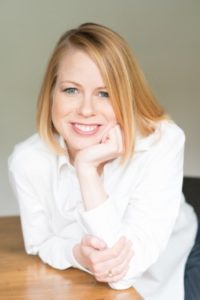
Assistant Professor, Syracuse Architecture, Syracuse University
See a list of Professor Amber Bartosh’s published research
[/vc_column_text][/vc_column][vc_column width=”1/2″][vc_column_text]
Melissa Green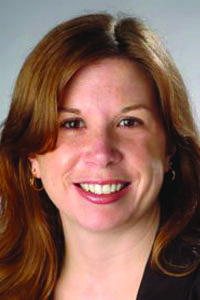
Associate Professor, Department of Mechanical and Aerospace Engineering, College of Engineering and Computer Science, Syracuse University
[/vc_column_text][/vc_column][/vc_row][vc_row][vc_column][vc_column_text]
[/vc_column_text][vc_column_text]
Intellectual Collision Bartosh is an architect who uses virtual reality to visualize things like energy flows around people in a building. Green, a mechanical and aerospace engineer, seeks to use the same technology to visualize fluid flows, such as around fins in water. “We see alignments between what we’re trying to do in terms of data visualization,” says Bartosh. “It’s not that crazy a pairing when you think about it from that standpoint.”
Nuts and Bolts Advancements in digital modeling tools have dramatically increased the amount of spatial data relating to fluid dynamics flow visualization, and building energy systems. However, the two-dimensional systems typically used to represent this data usually oversimplify complex three-dimensional conditions. With initial funding from SyracuseCoE as part of the Faculty Fellows Program, followed by a CUSE Innovation Grant from Syracuse University, Bartosh and Green are working to make links among traditional architecture, engineering software, and virtual reality software to create immersive data visualizations.
Challenges It’s a difficult process. While it’s easy to represent a building visually, it’s more challenging to show how a building is going to perform in terms of thermal control or daylighting. “Those things are more difficult to convey because we’re not used to seeing that data in 3-D,” says Bartosh. “We can measure it and record it in charts or spreadsheets, but what we’re trying to do is bring that into this virtual environment, feeling like you’re walking through the real space with the temporal qualities specifically related to energy and flow that we are trying to visualize.”
Real-World Collaboration Bartosh is using projects from SyracuseCoE Partner firm Ashley McGraw Architects as test cases for data visualization methods to see if they help with communication. In turn, Ashley McGraw has integrated VR into its practice after seeing how the technology was being used by architecture faculty working at the SyracuseCoE Interactive Design and Visualization Lab (IDVL).
SyracuseCoE Impact Bartosh and Green are both SyracuseCoE Faculty Fellows working out of labs at SyracuseCoE headquarters. Green directs the Flow Visualization Lab, while Bartosh works out of the IDVL. SyracuseCoE funding allowed for the purchase of VR equipment used for their current project. “The space and resources we have here are fundamental to what we do,” Bartosh says.
Bottom Line The collaboration is an attempt to make data visualization a more streamlined process for each of their own labs and, ultimately, a feasible product transferable to other STEM and design disciplines.
[/vc_column_text][/vc_column][/vc_row]
Status and Trends of Harmful Algal Blooms in Skaneateles Lake
The Skaneateles Lake Harmful Algal Bloom (HAB) Action Plan was published in 2017 in order to lay out a comprehensive approach to minimize the frequency and intensity of HABs in Skaneateles Lake. One recommendation of the HAB Action Plan was to perform a modelling effort to better understand the sources of nutrients potentially contributing to HABs, the lake dynamics, and to inform the development of a Nine Elements Watershed Plan.
As a run-up to that modelling effort, a data gap and trend analysis have been conducted to understand what data are available now to support modelling, what those data say about the status and trends of the lake, and what data are needed to conduct the recommended modelling. The findings of this analysis suggest that the lake is responding in complex and unexpected ways to a variety of stressors including invasive species and climate change.
During the forum, we discussed the findings of the analysis in detail and actions for next steps.
Presenter:
Anthony Eallonardo Jr., PhD, PWS
Dave Matthews, PhD
Elizabeth Moran, PhD
Research & Technology Forum Series
SyracuseCoE Partners Present: Bringing Hyperspectral Imaging Into the Mainstream, by Corning
Presenter:
Richard Zacaroli
Research & Technology Forum Series
From Battlefield to Barn: Innovative Environmental Sensors Adapted to Detect Disease in Dairy Cows
Presenters:
Chuck Stormon
Dr. Fathima Rinzan
Director of Microbiology, Acumen Detection
Fathima (Faraz) has been with Acumen’s R&D team since the beginning; she contributed tremendously to the development of revolutionary assays and a milk prep kit to screen for bovine mastitis. Faraz brings a wealth of knowledge to the team and has a unique set of skills acquired through working in diverse settings, such as biocide, biotech, and food manufacturing industries, clinical labs and academia. Faraz holds a Ph.D. and an M.S. in Applied and Environmental Microbiology, an M.S. in Microbiology, and a Bachelor’s degree in Microbiology. She is currently pursuing an MBA.
Angelina Lumia
Director of Production, Acumen Detection
Angelina leads manufacturing while making sure all the laboratories are safe and in compliance. Angelina is a co-author of a published article in the American Chemical Society Biomaterials Science and Engineering Journal. The article is based on her senior research project from SUNY ESF. Angelina holds a bachelor’s degree in biochemistry from SUNY ESF and is currently enrolled in the Master of Business Administration program at SUNY Oswego.
Benjamin Dorion
Director of Technology, Acumen Detection
Research & Technology Forum Series
SyracuseCoE offers regularly scheduled forums and networking showcasing innovative research, technologies and other opportunities of interest to stakeholders and community members. Past topics have included groundbreaking industry projects to modernize the HVAC systems at the Sistine Chapel, workshops to help state agencies develop funding priorities, and research on the impact of “green” buildings on cognitive function. To receive notice of these events, sign up for email updates at the “Join our mailing list” tab at the bottom right corner of the website. Visit the Research & Technology Forum page to see the archive.
Industry Partners Innovation: Personal Climate Control
Collaborative Research and Commercialization Project
If you surveyed employees in any office environment on any given day, it’s likely that a significant percentage would report that the temperature made them feel uncomfortable. That’s because office heating and cooling systems typically use a single thermostat to control temperature in a zone that contains many people, and thermal comfort varies from person to person.
The possibility for allowing each employee to control the temperature in their own microenvironment is moving closer to reality, thanks to an ongoing project led by Syracuse University faculty researchers, in collaboration with Air Innovations, United Technologies Research Center, Bush Technical LLC, and Cornell University.
Ongoing Syracuse University Research: In 2015, Syracuse University began a $3.2 million ARPA-E project to develop microenvironmental control systems, called μX, to provide localized thermal management for office workers, which would dramatically reduce building energy use. With support from SyracuseCoE, faculty and students at Syracuse University the personalized environmental control systems project, led by H. Ezzat Khalifa, now professor emeritus of mechanical and aerospace engineering, produced several prototype units. Now, Air Innovations is working with SyracuseCoE to redesign the unit for cost-effective commercial manufacture.
“The real core technology that was developed is commercializable, but there are individual components that are not ready for manufacture, so we need to substitute with off-the-shelf technology,” says Michael Wetzel, president and CEO of Air Innovations in Syracuse.
Wetzel says it’s important to understand how the unit will be used in practice: Will employees run it all day long, or only for parts of the day when they want to adjust the temperature? Will people want it integrated into their desk or are they comfortable with it being an object sitting on the floor? “Right now we’re focusing on making sure that the product is acceptable to the market, in terms of the actual capacity for how it will be used and in terms of form and function,” he says.
The hope is to secure funding for a field trial to be conducted in real-world office environments. “We’d like to have about 50 units in place by June 2019 and collect data over six months,” says Wetzel. The data collected will inform capacity and aesthetic decisions about the product, which he hopes to see go commercial by mid-2020.
“What’s really going to drive this product to market is people’s interest in having absolute control over their environment and their productivity,” says Wetzel. “There is a huge opportunity to save money and energy so this product can pay for itself over time.”
Faculty Fellows Research: Developing a Sustainable Battery
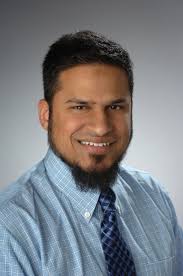 Ian Hosein
Ian Hosein
Assistant Professor, Department of Biomedical and Chemical Engineering, College of Engineering and Computer Science, Syracuse University
Project
A Solid Polymer Electrolyte from Cross-Linked Polytetrahydrofuran for Calcium Ion Conduction
Developing a solid-state calcium-ion battery that is a cheaper, more powerful, and environmentally safer alternative to lithium-ion batteries.
SyracuseCoE Impact
A Faculty Fellows award from SyracuseCoE funded supplies and equipment to produce and test a prototype electrolyte and demonstrate that it is extremely conductive. “We have integrated the solid electrolyte into a prototype calcium-ion battery, demonstrated that it works, and are currently focusing on improving it,” Hosein says. “We never could have done this without the financial support from SyracuseCoE.”
Backstory
Lithium-ion batteries are a popular energy technology due to lithium’s ability to store energy. Unfortunately, since lithium is mined in far-off places, it’s also expensive. And most lithium-ion batteries contain a liquid electrolyte that is flammable. “There’s a drive to find another ion that has the same energy density but is cheaper and more earth-abundant,” says Hosein.
Nuts and Bolts
Hosein has developed a battery using calcium—one of the most abundant elements in the world, which has double the charge of lithium—and replaced liquid electrolyte with a flame-resistant solid. “It’s essentially a plastic that contains the calcium ions and facilitates transport from one electrode to the other,” he explains. However, because every ion is unique, so is the solid electrolyte required to conduct energy. “It takes a lot of development to get the right combination of calcium source and the right plastic composition to actually get something that’s conductive,” says Hosein.
Practical Application
Having a safer and more powerful battery is important for industries ranging from personal devices to transportation. “Everyone’s heard about cell phone batteries that explode,” says Hosein. “A big concern with electric cars is the battery. You’re driving around with about a gallon of flammable liquid in there. If we can replace that with a nonflammable solid and we replace lithium with calcium, then we’re going to have a safer, better battery overall.”
Read more about the researchers in the SyracuseCoE Faculty Fellows Program.
2019 U.S. Department of Energy Solar Decathlon: An Encore Winning Presentation
Mixed Use Multi-Family Housing Division First Place Winners
SUNY ESF and Syracuse University SEED – Syracuse Energy Efficient Design
See below for an encore presentation by the first place winning team in the U.S. Department of Energy’s 2019 Solar Decathlon’s Mixed Use Multi-Family Housing Division. Students from SUNY ESF and Syracuse University collaborated this past year in the design of a Net Zero Energy Building, with guidance from several SyracuseCoE industry partners and community stakeholders.
The U.S. Department of Energy Solar Decathlon is a collegiate competition that challenges student teams to design and build highly efficient and innovative buildings powered by renewable energy. The winners of the competition are selected at a pitch event held at the National Renewable Energy Laboratory (NREL) in Golden, Colorado, and reflect proposals that blend design architectural and engineering excellence with innovation, market potential, building efficiency, and smart energy production.
Beyond designing an innovative net-zero energy building, the team also focused on addressing important social, economic, and environmental issues in the City of Syracuse. This presentation summarizes the challenges and follows the project from schematic design into design development and construction documents. Finally, students discussed opportunities for next steps in the project.
Presenters:
Michael Schmidt
Michael Schmidt is currently a junior studying Sustainable Construction Management with a minor in Management at SUNY-ESF. He transferred to ESF from Rockland Community College where he earned a degree in Green Buildings Maintenance & Management. Throughout his collegiate career, Mike has developed a strong passion for sustainability in the built environment. Beyond course work, he has worked for two years as a sustainability consultant on a variety of single-family and multifamily projects across the tri-state area.
Erika Gripp
Erika Gripp is one of three student leads on the DOE Solar Decathlon project and is a junior in the Construction Management program at SUNY-ESF. Originally from New Jersey and has been fascinated by the construction process since she was young. Her long term goal is to make a difference in the way buildings are created in relation to the environment.
Noah Townsend
Noah Townsend is a Syracuse native currently attending SUNY College of Environmental Science & Forestry, pursuing his Bachelors in Sustainable Construction Management. He is one of three student leads in this years ESF/SU Solar Decathlon team. In addition, Noah has construction experience working for Consigli and Syracuse Custom Carpentry and Millwork.
Benjamin Schmidt
Benjamin Schmidt grew up in the rural community of Attica, NY just outside of Buffalo. He is currently a senior working towards a B.S. in Environmental Resources Engineering with a minor in Water Resources at SUNY-ESF. Ben leads the engineering team for the DOE Solar Decathlon project, managing the mechanical, electrical, and structural design components. His goal is to produce sustainable designs in buildings and environmental infrastructure.
Ryan Badke
Ryan Badke grew up in Syosset, NY on Long Island and is currently a junior in the Sustainable Constitution Management program at SUNY ESF. He has developed strong passion for sustainability and finding innovative ways to decrease waste products throughout the construction process. Ryan worked as a site superintendent at Park East Construction where he was responsible for all the day to day operations for the renovation of 5 schools throughout the Hicksville School District, while the schools were fully operational. He was also part of ESF’s DOE Solar Decathlon team and worked with the energy team to design renewable energy systems to ensure the design would be net-zero and have a small carbon footprint.
[vc_row][vc_column][vc_video link=”https://youtu.be/CG3VYJP0ZeY” el_width=”60″ align=”center”][/vc_column][/vc_row]
Up, Up, and Away: Using Drones for Earth Sciences and Geospatial Research and Teaching
Presenters:
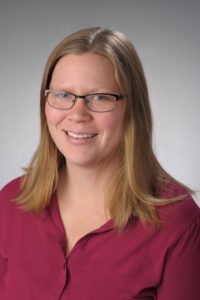
 Professor Christa Kelleher
Professor Christa Kelleher
Professor Jane Read
Research & Technology Forum Series
SyracuseCoE Selects Five Companies from CenterState NY to Receive Funding to Advance Innovations
SyracuseCoE has selected five companies from CenterState New York to receive awards from the latest round of its Innovation Fund competition. Four the recipients are start-up firms that are members of the Clean Tech Center, an incubator operated by CenterState CEO at The Tech Garden. SyracuseCoE’s Innovation Fund is designed to help its Partner firms overcome barriers to the commercialization of potentially transformative innovations.
The five award-winning companies and their projects are:
- cocoon construct, based at the CleanTech Center at The Tech Garden, is developing a prefabricated panelized system that seeks to unlock the market for whole-building deep energy retrofits in New York State and create jobs at multiple manufacturers throughout the product’s supply chain.
- Ducted Turbines International, located in Potsdam and at the CleanTech Center, is commercializing a ducted turbine technology and needs to address key aspects of the system that are not readily available.
- Edson Innovative Power, LLC, based at the CleanTech Center, will perform advanced thermal simulation and analysis on its product to drive design optimization and design verification prior to moving to production.
- Farm to Flame Energy, a student-led venture from Syracuse University that is a member of the CleanTech Center, will construct a proof-of-concept prototype of a biomass-powered electricity generator that is capable of using any dry biomass feedstock.
- LC Drives, located in Potsdam, is developing the next generation of electric motors that are smaller, lighter, and more efficient. This project will help scale the machine design and related manufacturing equipment.
“SyracuseCoE’s Innovation Fund awards highlight CenterState New York’s vibrant ecosystem for innovations and entrepreneurship in environmental and energy systems,” said Ed Bogucz, SyracuseCoE executive director, and associate professor of mechanical and aerospace engineering at Syracuse University. “These awards are intended to help companies bridge the gap to commercialization of new products. We are especially pleased that four of the recipients also are receiving support from CenterState CEO’s CleanTech Center program at The Tech Garden.”
SyracuseCoE is New York State’s Center of Excellence for Environmental and Energy Systems. Funding for the SyracuseCoE Innovation Fund is provided by industry members of the SyracuseCoE Partner Program. The five awards in the current round total $47,146. To date, awards from the program have totaled $407,345 and supported 37 clean energy projects at 24 companies throughout New York State.
Eligibility for Innovation Fund awards is open to all current members of the SyracuseCoE Partner Program. The next call for proposals is expected in August. Applicants submit a proposal and then pitch their project to a panel of reviewers from the region. To learn more about joining the SyracuseCoE Partner Program, contact Tammy Rosanio at tlrosani@syr.edu.
Faculty Fellows Research: The Impact of Green Infrastructure
Through SyracuseCoE, my students gain the ability to interact with others who are doing interdisciplinary water research at both the faculty and student level. Christa Kelleher
 Christa Kelleher
Christa Kelleher
Assistant Professor, Department of Earth Sciences, College of Arts and Sciences; Assistant Professor, Department of Civil and Environmental Engineering, College of Engineering and Computer Science, Syracuse University
See a list of Professor Kelleher’s published research
Project
Assessing the impact of passive green space on water infiltration, ground temperature, and air temperature.
Backstory
Like many older cities, Syracuse has a combined sewer system that includes both sanitary waste and surface runoff. Rain and snowmelt can exceed the capacity of the system and cause combined sewer overflow (CSO), rising urban stream temperatures and harming aquatic ecosystems. Green infrastructure throughout the city attempts to improve water infiltration and reduce overflows. In addition to green infrastructure, the city’s many vacant lots can be considered a form of passive green infrastructure.
Nuts and Bolts
Kelleher and her students are assessing the performance of green infrastructure installations and vacant lots in Syracuse. They are monitoring soil temperature, air temperature, and water infiltration on five vacant lots slated to be repurposed with green infrastructure into urban rain gardens. “These conversions are designed to impact a single CSO outlet,” Kelleher explains. “The idea is that if they co-locate these sites, maybe it will impact the amount of storm water running off.” Baseline information gathered before installation will be used to evaluate the progress and effectiveness of the rain gardens. In addition, as a source of comparison, they are also collecting data from rural parks and from established green spaces within the Syracuse urban core.
And Another Thing
One of the sites being studied is SyracuseCoE headquarters. Graduate student Crystal Burgess installed sensors on the SyracuseCoE green roof, on a large planting bed adjacent to the parking lot, and in a mostly shaded area near the building entrance. “This allows us to gather a range of temperature profiles that we would see in an urban area and also to factor in how much factors such as buildings and vegetation play in decreasing soil temperature,” Burgess says. Summer intern Zoe Curewitz, a student at Nottingham High School in Syracuse, also contributed to the project by helping to install sensors across the Syracuse University campus.
SyracuseCoE Impact
Kelleher previously received a $10,000 competitive award from the Faculty Fellow Program to *study longitudinal patterns of stream temperature and levels of storm flow along Onondaga Creek using unmanned aerial vehicles. “All of this work concerns the movement of heat in urban systems,” she says. In addition to funding, “SyracuseCoE has been instrumental in helping me connect with other folks at the University and beyond that to the broader community,” she says. “Through SyracuseCoE, my students gain the ability to interact with others who are doing interdisciplinary water research at both the faculty and student level.”
Faculty Fellows Research: Assessing Chemical Impact
 Charles Driscoll
Charles Driscoll
University Professor of Environmental Systems and Distinguished Professor, Department of Civil and Environmental Engineering, College of Engineering and Computer Science, Syracuse University
See a list of Professor Driscoll’s published research
Project
Professor Driscoll is measuring atmospheric deposition—the chemicals reaching the Earth through rain and air—in Central New York, comparing sites in urban Syracuse, including the SyracuseCoE green roof, with rural Skaneateles.
Backstory
The Syracuse project is an offshoot of Driscoll’s long-standing research on the effects of acid and mercury deposition and climate change on forest, aquatic, and coastal ecosystems in the Northeast and elsewhere. Driscoll also recently began collaborating with researchers at Boston University who are taking similar measurements in Boston, to develop models to evaluate how urban landscapes are different from rural landscapes in responding to climate change and urban air pollution. He’s also sharing information with the National Atmospheric Deposition Program, which is increasing its research focus on urban areas.
Nuts and Bolts
Driscoll began measuring atmospheric deposition at the SyracuseCoE headquarters in 2011. Last year, he added additional sites in Syracuse to compare levels and patterns of contaminants over the course of the year. He’s also assessing the function of the SyracuseCoE green roof in terms of its ability to retain water, nutrients, and trace metals. “We measure many more chemicals than is routine,” Driscoll says. Because there have been few measurements taken in urban areas and some of these chemicals are not typically measured, Driscoll believes some of the patterns found in Syracuse have never before been reported. As an additional comparison, he established a testing station in Skaneateles identical to the one at SyracuseCoE.
What He’s Found
Not surprisingly, overall air pollution levels in Syracuse are higher than those in Skaneateles, significantly impacted by highway auto emissions, construction activities, and road salt. But there were chemicals with higher levels in the rural setting, including phosphorus. “There are harmful algal blooms in Skaneateles Lake that people think are driven by inputs of phosphorus. We think the phosphorus we’re measuring is going to be a large input to the lake,” he says. “We learn things from these measurements that stimulate interest in new areas that we didn’t really intend.”
SyracuseCoE Impact
Driscoll’s project has been funded over four rounds of the Faculty Fellows Program. In addition to research funding, the SyracuseCoE green roof provides a world-class research environment. “There’s a lot of interest in green infrastructure, and the SyracuseCoE green roof is a Cadillac roof,” he says. “I don’t think there’s a green roof in the world that outperforms it.”
Practical Application
Few studies have been done of atmospheric deposition in urban areas. “If we’re interested in thinking about urban areas as landscapes, it’s nice to know what’s coming into the system and helpful to know how the landscape functions,” he says.
Engineered by Corning, Designed by Syracuse Architecture: The Architectural Applications of Corning® Willow Glass®
Presenters:
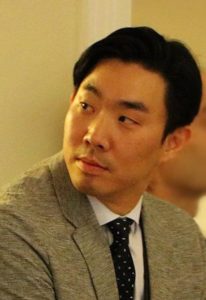 Dr. Daekwon Park
Dr. Daekwon Park
 Dr. Sean Garner
Dr. Sean Garner
Moderated By:
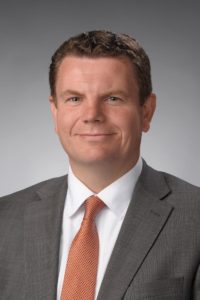 Gary Girzadas
Gary Girzadas
Research & Technology Forum Series
From the Front Lines: Deep Energy Retrofit Solutions
New York State Energy and Research Development Authority (NYSERDA) has partnered with the Dutch initiative EnergieSprong to challenge market development of feasible deep energy retrofits. Beginning with six pilot projects focused on affordable multifamily housing, teams throughout the State search to flush out demand forecasts, industry investment, and regulatory constraints to drive market transforming solutions to net zero, or near net zero retrofits targeting the State’s existing building stock.
Where do the origins of this concept lie? This leads us on an adventure through the Netherlands, where market development has been in process for nearly ten years. A team of architects, engineers, financiers and owners took the opportunity to experience, first-hand, the advancements in technology and financing principles involved with developing market ready deep energy retrofits.
We bring this information back to North America for implementation, sharing details of cost compression including industrialization of architectural components, pre-fabricated mechanical systems, and finance models showing the ability for such retrofits to become viable in a market driven economy. Most importantly we make connections to New York State and North America, assessing compatibility and the opportunity to adapt and expand upon metrics seen for nearly a decade overseas.
Presenters:
Tom King
CPHD, LEED AP
Designer King + King Architects
Tom is a Certified Passive House Designer and Tradesperson, trained in the construction, detailing and energy modeling of high-performance buildings. At King+King he lives in the details. Designing high performing envelope systems for all buildings, large and small. Whether it be Net Zero, Passive House, new construction or renovation, complying with limited budgets and Energy Codes, or striving toward the highest performance metrics; every building stands to benefit from air tight construction, continuous insulation and high quality detailing coupled with integrated mechanical system strategies. Tom pushes this boundary and challenges colleagues and consultants alike to think, design, and construct more holistically.
Tom is a graduate of Stevens Institute of Technology, where he held a leading role in the research, design and construction of the SURE House’s resilient and sustainable components. The SURE House is a net zero energy prototype for resilient residential construction targeting coastal neighborhoods increasingly affected by a changing climate. The Stevens SURE House team, led by six graduate students including Tom, won an unprecedented seven of ten competitions at the 2015 US Department of Energy Solar Decathlon competition. Tom holds a Master’s in Engineering from Stevens and a Bachelor of Science in Architecture from Roger Williams University.
Sadie McKeown
Executive VP and COO
Community Preservation Corporation
McKeown oversees the company’s lending activities, business operations and investor relations, as well the operation of its regional field offices located throughout New York. McKeown is also responsible for spearheading the company’s innovative “underwriting efficiency” practice that incorporates energy and water efficiency features into the financing of first mortgages for multifamily building owners. CPC has used this new underwriting method to leverage nearly $6.4 million in additional mortgage financing to fund more than 3,600 units of energy-efficient multifamily housing across NYS.
After starting her career at CPC as a Mortgage Originator in 1992, McKeown later served as Senior VP and Director of Lending in CPC’s Hudson Valley Region, where she led the company’s Downtown Main Street initiatives. McKeown earned her Master’s Degree in Human Services Administration with a concentration in Housing from Cornell University. She received her Bachelor’s Degree in Communications from Fordham University.
[vc_row][vc_column][vc_video link=”https://youtu.be/Ez-Es0EfLnc” el_width=”60″ align=”center”][/vc_column][/vc_row]
Research & Technology Forum Series
Call for Proposals: Up to $10,000 available for SyracuseCoE Partners
2019 Innovation Fund Round 1 Call for Proposals Open to Partners
The deadline has passed.
The Syracuse Center of Excellence in Environmental and Energy Systems (SyracuseCoE) invites proposals to the SyracuseCoE Innovation Fund from current SyracuseCoE Partners for up to $10,000. The Innovation Fund is funded by SyracuseCoE Partner Program and is designed to support Partners’ efforts to overcome barriers to the commercialization of potentially transformative innovations. Projects must be aligned with commercialization of innovative products/technologies and focused on one or more of SyracuseCoE’s three core areas:
- Indoor Environmental Quality and Building Energy Efficiency
- Clean & Renewable Energy
- Water Resources
To apply, you must submit the application and required documents by 5:00pm EST, Friday, March 8th, 2019.
Small Packaged Heat Pumps: Rethinking Everything
Heat pumps are a key strategy for eliminating fossil fuel use, being promoted by everyone from savvy HVAC contractors to national environmental groups to city and state agencies, but split system heat pumps are costly. Wouldn’t a small packaged solution be a hit in the market? Multifamily per-room heat loss is becoming so small, whether through deep energy retrofits or high-performance new construction, that a small packaged heat pump might really be JUST what’s needed for widespread adoption.
Imagine: no refrigerant piping, no refrigerant pipe insulation or chases, no licensed refrigeration tech, no outdoor pad, no outdoor electrical disconnect, not even an outdoor unit of any sort! How about costs in the $1000-2000 range instead of $5000-10,000 or more. Taitem’s recent study of existing and emerging technology reveals that we’re not quite there yet.
Where are we? What’s out there? Do current packaged terminal heat pumps come close? And if not, could they with some design modifications? What else is available or being developed? Watch our January R&T below for a lively discussion of getting downright small with heat pumps.
Presenters:
 Ian Shapiro, PE, LEED AP
Ian Shapiro, PE, LEED AP
Senior Engineer
Taitem Engineering
Ian founded Taitem in 1989. He is the co-author of the books Green Building Illustrated (2014) and Energy Audits and Improvements for Commercial Buildings (2016), both published by Wiley. He has been a visiting lecturer at Cornell University, Tompkins Cortland Community College, and Syracuse University. He holds an undergraduate degree from McGill University, and an M.S. from Columbia University, both in mechanical engineering. Ian is a licensed engineer in the states of New York, Connecticut, Pennsylvania. In his spare time, Ian enjoys to spend time with family and friends, write poetry, and play soccer and basketball.
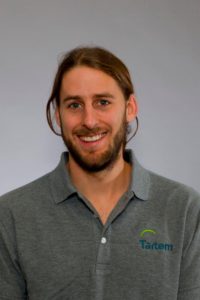 Evan Hallas
Evan Hallas
Senior Energy Analyst
Taitem Engineering
With ten years of experience in building science and energy efficiency, Evan has a deep understanding of building systems, strong communication skills, and a commitment to quality. Evan recognizes the importance of getting the details right, and to support this, he splits his time between the office and being out in the field.
[vc_row][vc_column][vc_video link=”https://www.youtube.com/watch?v=Fx_zF5MXgmk&t=4s” el_width=”60″ align=”center”][/vc_column][/vc_row]
Research & Technology Forum Series
SyracuseCoE Has Student Internships Available!
Students play an integral role in the success of SyracuseCoE. As part of a student-focused research university we have the privilege to engage a diverse group of students in varying capacities throughout the year. Staff interns, members of the Summer Industry Collaboration Internship Program, and student researchers are just a few of the roles students have at SyracuseCoE to participate in experiential learning and real-world industry collaboration that addresses emerging opportunities and societal needs. Visit the links below for all the internship info!
What’s it like to work at SyracuseCoE as an Intern?
SyracuseCoE Building Systems Intern
SyracuseCoE seeks candidates to work as Intern, 10-40 hours a week, to assist Facilities Manager in providing support for HVAC, Mechanical, and Electrical building systems. This internship position is available immediately and has the potential to be extended throughout the remainder of 2019.
UTC Center for Intelligent Buildings: A Living Showcase of What’s Possible
The UTC Center for Intelligent Buildings is a first-of-its-kind technology, innovation and collaboration center showcasing United Technologies products and integrated systems.
Located in Palm Beach Gardens, Florida, the center features solutions and interactive displays from UTC’s Comfort, Control and Security brands (CCS), creating a living showcase of what’s possible when technologies are implemented intelligently and integrated to increase efficiency, protect people and property, and enhance the occupant experience.
This presentation focuses mainly on the building’s HVAC innovations, and, time-permitting, we will visit the building operations remotely, via its building automation system.
Presenter:
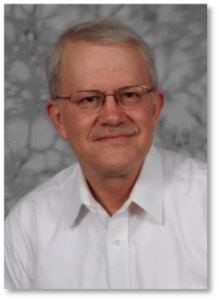 William (Bill) Chadwick
William (Bill) Chadwick
Principal Systems Engineer
UTC Building Solutions Group, AdvanTEC
United Technologies Corporation
Bill is part of the global UTC Building Solutions Group, which serves as a central point of contact for key accounts and delivers highly engineered solutions to solve customer problems in various vertical markets. Bill Chadwick serves as principal systems engineer within the AdvanTEC technology & engineering group.
Bill has more than 45 years of building systems engineering experience. He has:
- Expertise in HVAC systems analysis, design, and integration; indoor air quality design and remediation; and building systems control and integration.
- Held positions within consulting engineering and architectural firms where he designed, engineered, and directed the design of HVAC, plumbing and fire protection systems for commercial, institutional and industrial buildings, new and remodeled.
- Provided HVAC system design consultation for The New Falcon Stadium, Atlanta, GA, and the Residence Antilia, Mumbai, India
- Developed various award-winning, custom solutions, including an innovative HVAC solution for the Sistine Chapel, which reduced energy use more than 30% while doubling the load.
- Determined the MEP system selections and served as the design consultant for UTC’s new Center for Intelligent Buildings, designed to use 40% less energy despite increasing outdoor air ventilation by over 50% to improve IAQ and occupant productivity.
Bill has served on industry advisor boards for both the Syracuse Center of Excellence in Environmental and Energy Systems, and the Center for High Performance Buildings at Purdue University. He received a B.S. in Mechanical Engineering, University of Michigan, and a Certificate in Indoor Environmental Quality, Syracuse University. Bill is a Licensed Professional Engineer in MI, OH, NY and PA. He is a Certified Energy Manager from the Association of Energy Engineers (AEE), and is a LEED® Accredited Professional BD+C from the U.S. Green Build Council (USGBC). He remains active in ASHRAE as a Life Member.
[vc_row][vc_column][vc_video link=”https://www.youtube.com/watch?v=DtMYGeBHre4″ el_width=”60″ align=”center”][/vc_column][/vc_row]
Research & Technology Forum Series
Inficon Facility Tour
U.S. Policy Options to Decrease Emissions of Carbon Dioxide to Mitigate Changing Climate
Presenter:
[vc_row][vc_column][vc_video link=”https://www.youtube.com/watch?v=hl_JnQ8WHUA” el_width=”60″ align=”center”][/vc_column][/vc_row]
Research & Technology Forum Series
CHAMPS and Annex68 Meet Again at SyracuseCoE
Syracuse, NY –Leading researchers from around the world convened again at the Syracuse Center of Excellence in Environmental and Energy (SyracuseCoE) to take part in a workshop and meeting on advanced building systems. The events examined the major challenges facing the combined heat, air, moisture and pollutant simulations for the design and operation of sustainable buildings, featured the most recent progress, and discovered opportunities for further collaboration.
The 15th International Forum and Workshop on Combined Heat, Air, Moisture and Pollutant Simulations (CHAMPS) included presentations by the international visitors and Syracuse University faculty and students. The 6th Expert Meeting of IEA-EBC Annex 68 Indoor Air Quality Design and Control in Low Energy Residential Buildings was held on the same day at SyracuseCoE. The two events had a joint public meeting, with topics at the forum including indoor environment quality models, energy performance research, healthy and intelligent buildings strategies and site planning around the effects of climate change.
Both events highlighted the importance of creating high-performance buildings that improve human health and performance while remaining sustainable and reducing building energy use. Research has indicated that people spend up to 80% of their time in indoor environments and 40% of building energy consumption goes to normal operations of heating, cooling and lighting. Industrialization has made it more critical than ever to develop sustainable buildings that boost human quality of life while reducing energy consumption.
15th Annual International Forum and Workshop on CHAMPS Organizers
Danish Technical University, Denmark
Dresden University of Technology, Germany
Nanjing University, China
Syracuse University, U.S.A.
University College of London, U.K.
University de la Rochelle, France
University of Tokyo, Japan
Aims and Scope
CHAMPS 2018 and IEA-EBC Annex-68 will have a joint public meeting in the afternoon of September 30, 2018 to discuss the major challenges facing the combined heat, air, moisture and pollutant simulations for the design and operation of sustainable buildings, highlight the most recent progresses, and identify opportunities for further collaboration. Topics may include:
1. Whole building IEQ and energy performance: Modeling and simulation of combined heat, air, moisture, and pollutant transport processes in and around buildings, and how these processes impact IEQ and building energy efficiency;
2. Healthy and intelligent buildings: Interaction and interdependencies between IEQ and energy efficiency measures, effectiveness of source reduction, ventilation and air cleaning strategies; model-based predictive control, application of internet of things (IOTs) technology in distributed building environmental control;
3. Climate, community and site planning: Climate change effects on IEQ, urban and community planning, micro-urban climate and energy efficiency of building clusters;
4. Building envelope performance: hygrothermal performance of buildings in different climates, leakage and moisture control, envelope-integrated ventilation and energy storage systems, energy and durability;
5. Micro-environment around occupants: demand-based personal environmental control, occupant behavior and impacts on IEQ and energy efficiency;
6. Design studio: Methods and tools for coordinated and integrated urban and building systems design, building information modeling (BIM), CHAMPS simulation framework, software, and optimization techniques, common databases of materials, assemblies, building topologies, climates, and real-world versus design performances.
7. Case studies: Applications of CHAMPS for building systems design and model-based predictive controls.
SyracuseCoE previously hosted the 13th International Forum and Workshop on CHAMPS in 2016. The city of Syracuse is a leader in the international community of indoor air quality and sustainable building technology. Previous events such as the 2018 International Building Physics Conference and upcoming expos like the Emerging Technology Showcase draw global experts and researchers to Syracuse.




